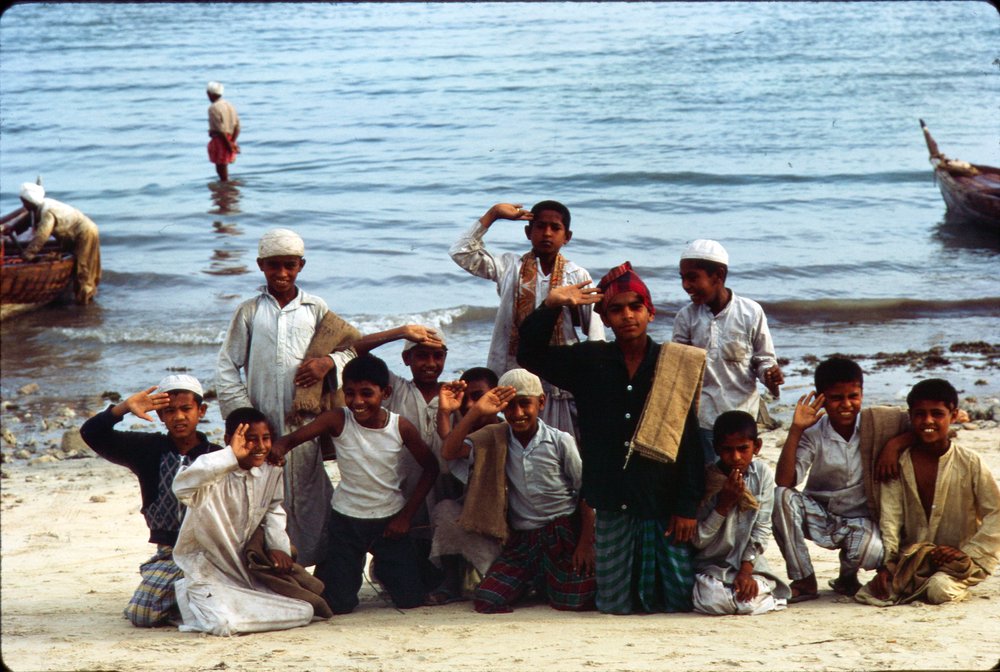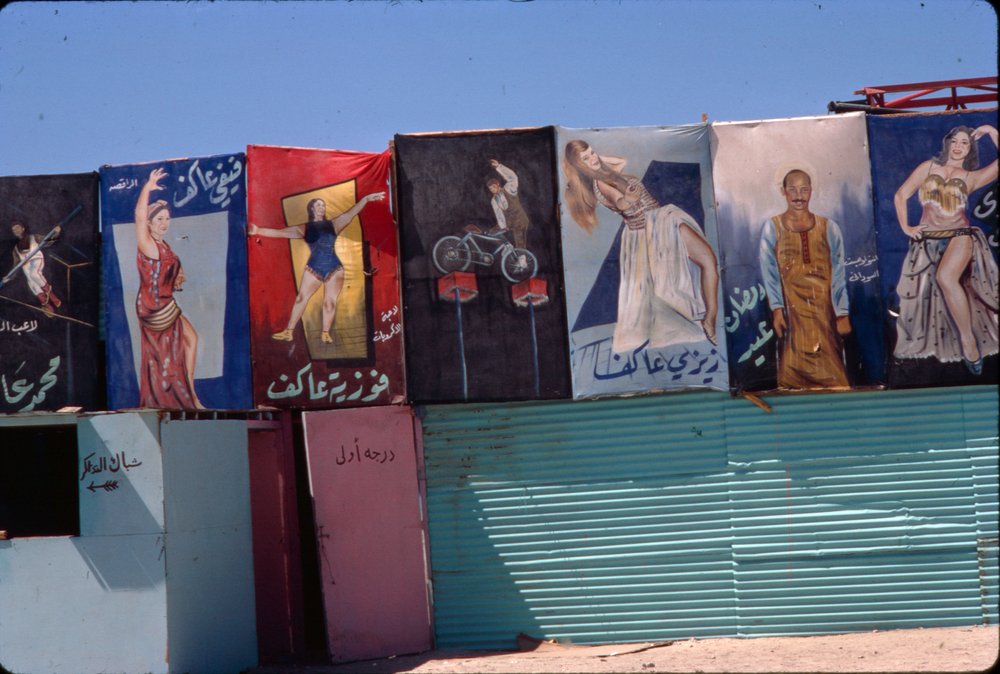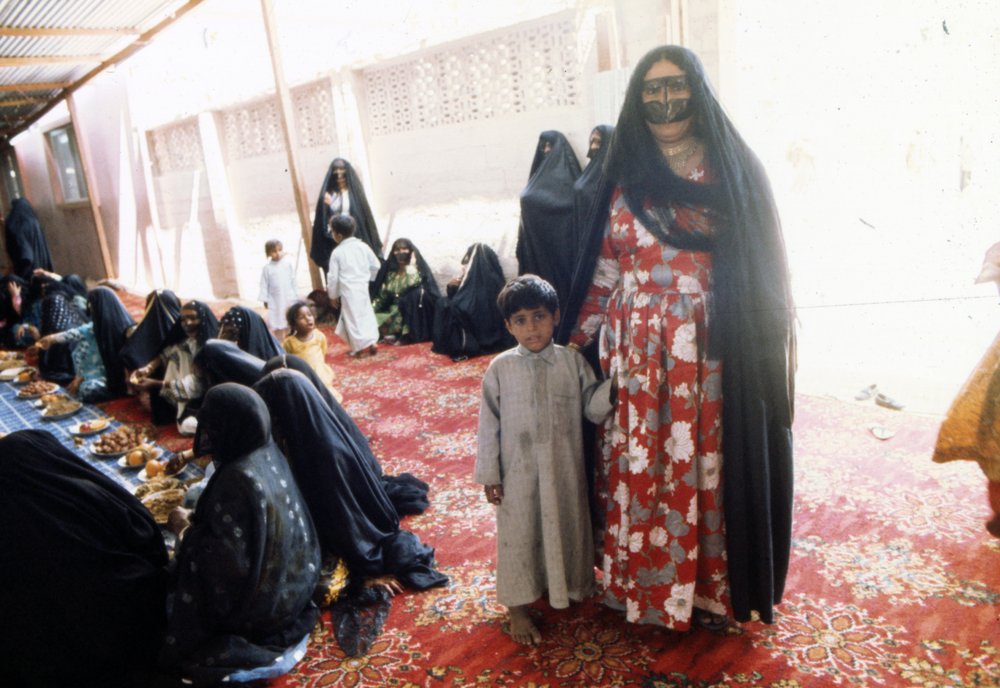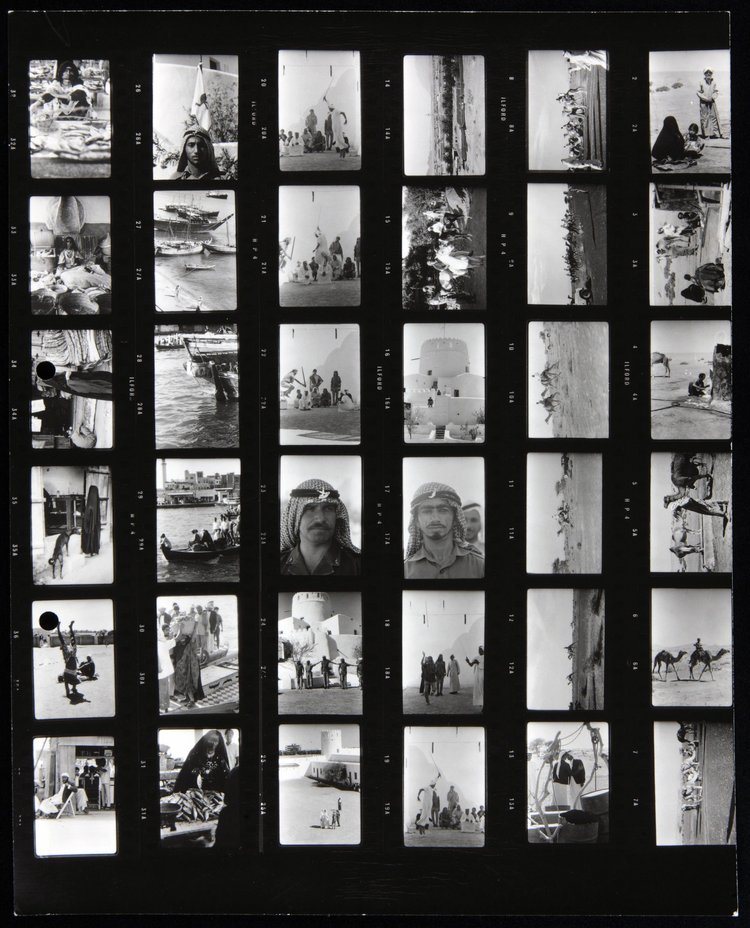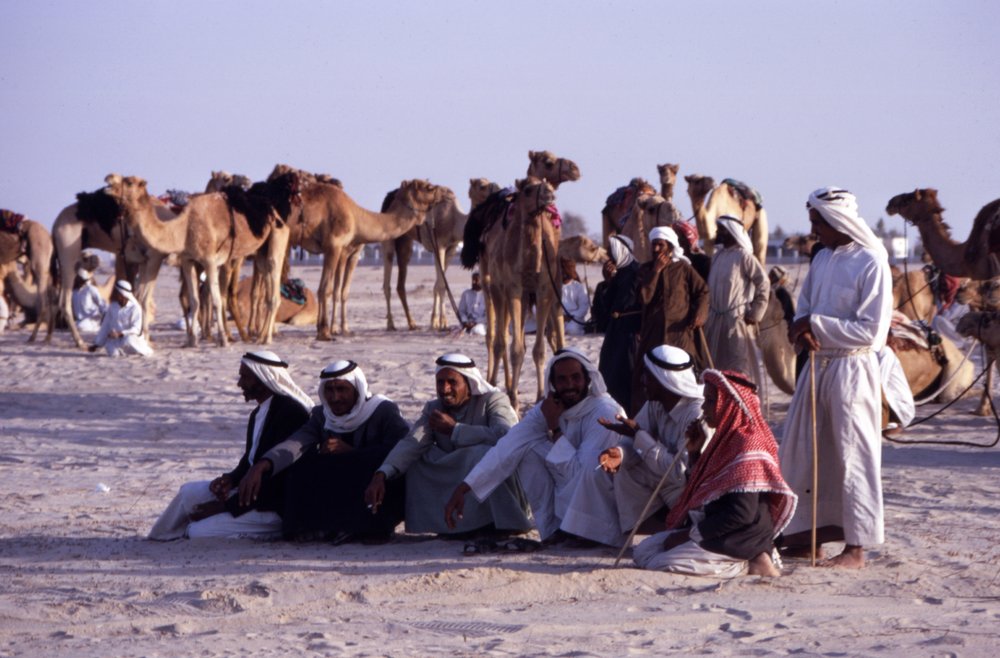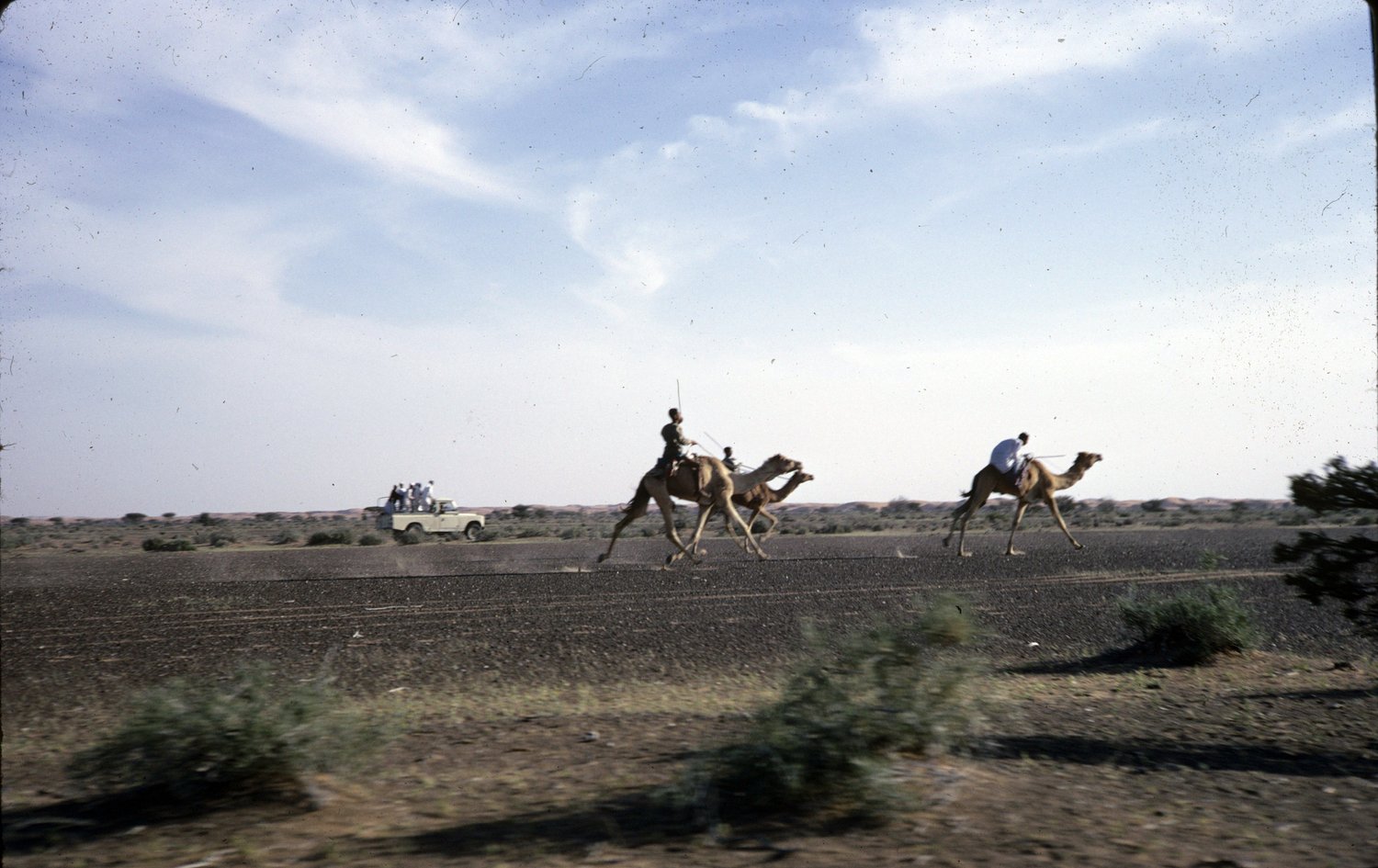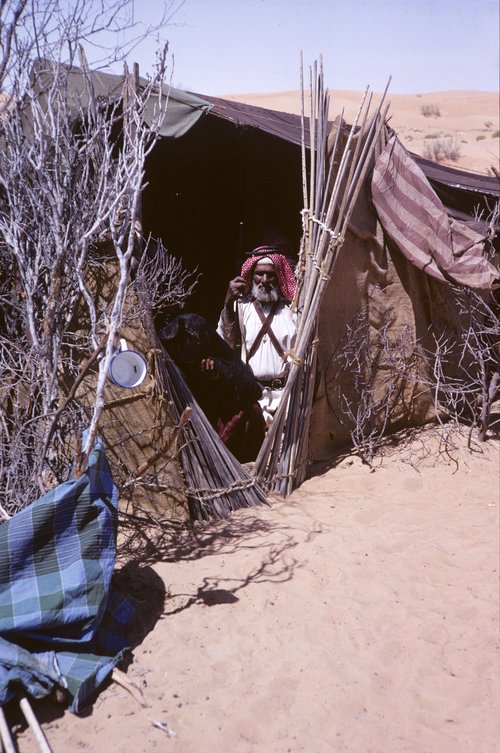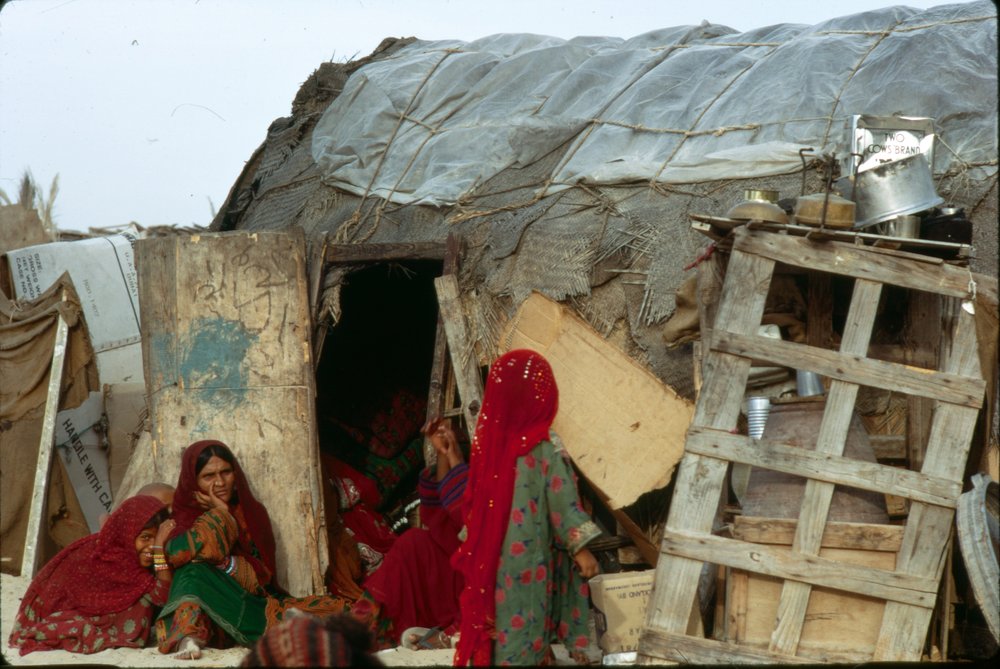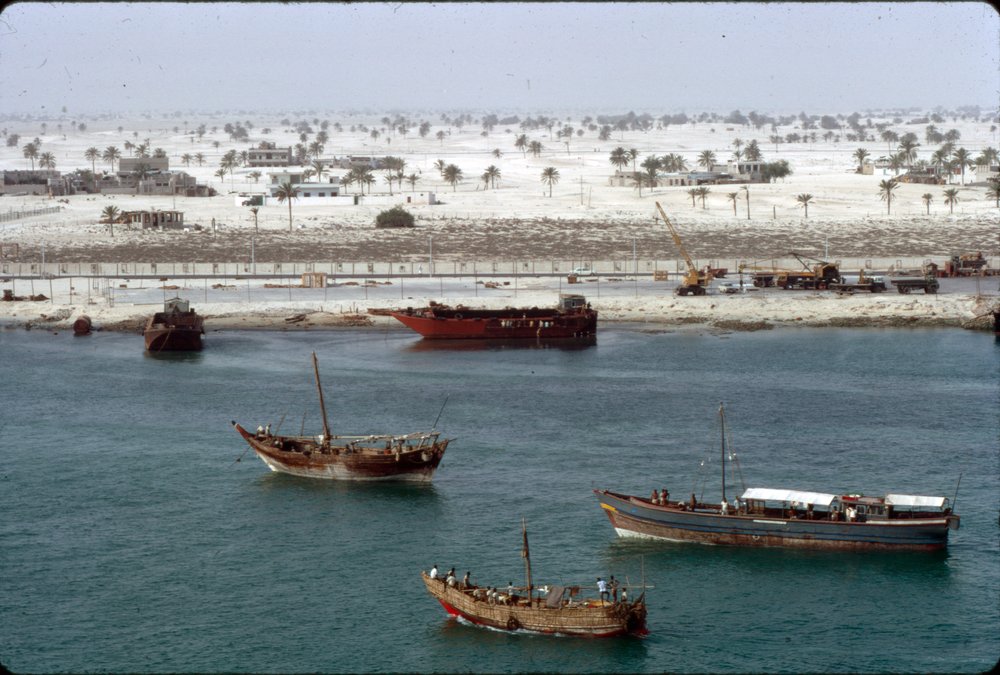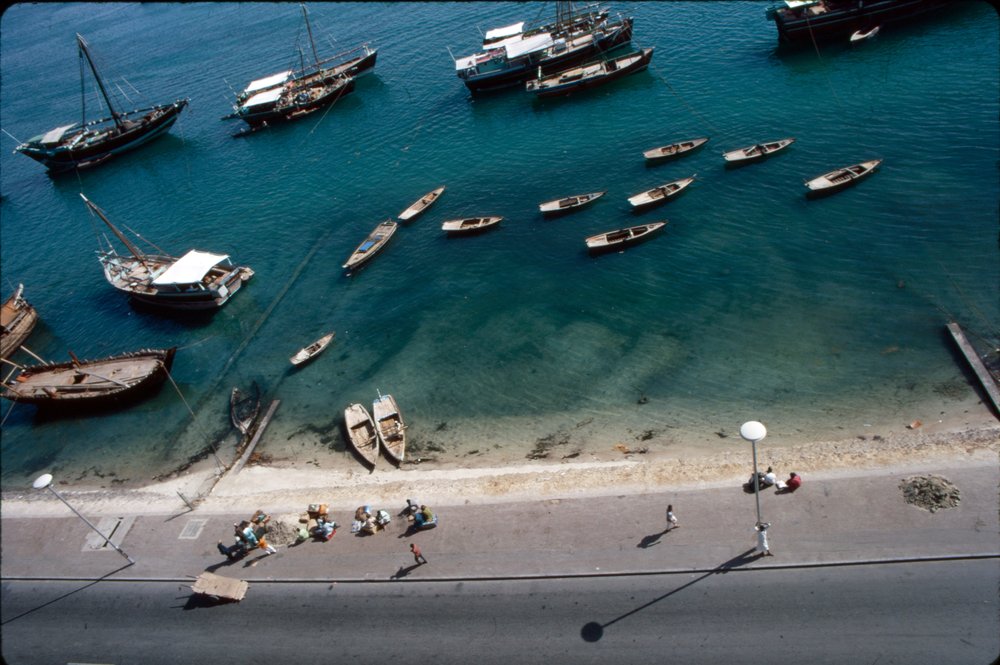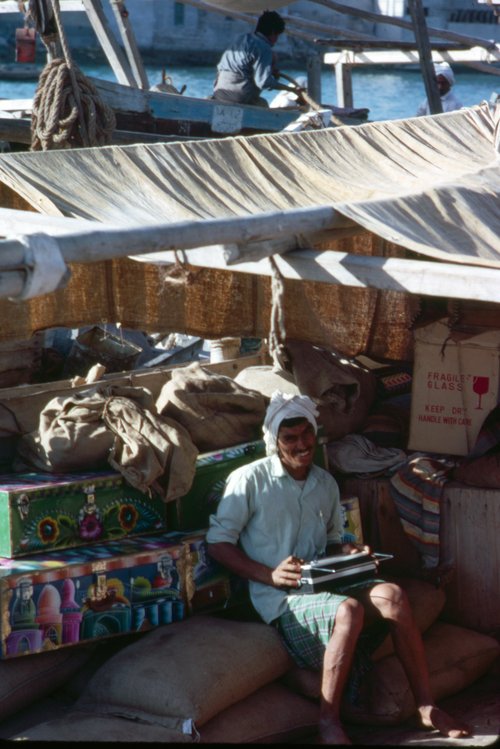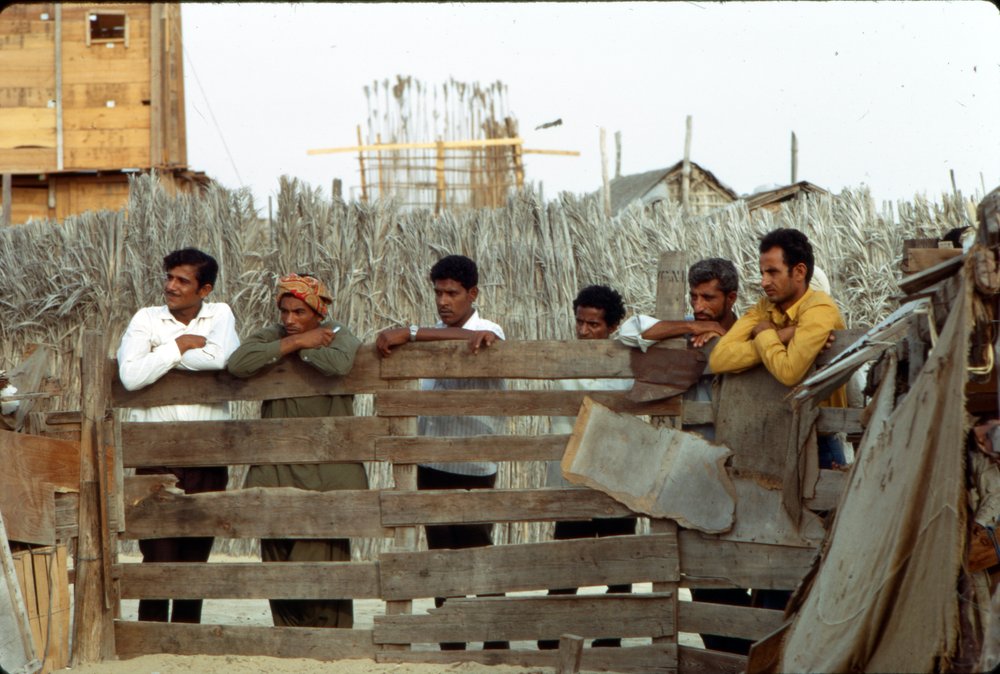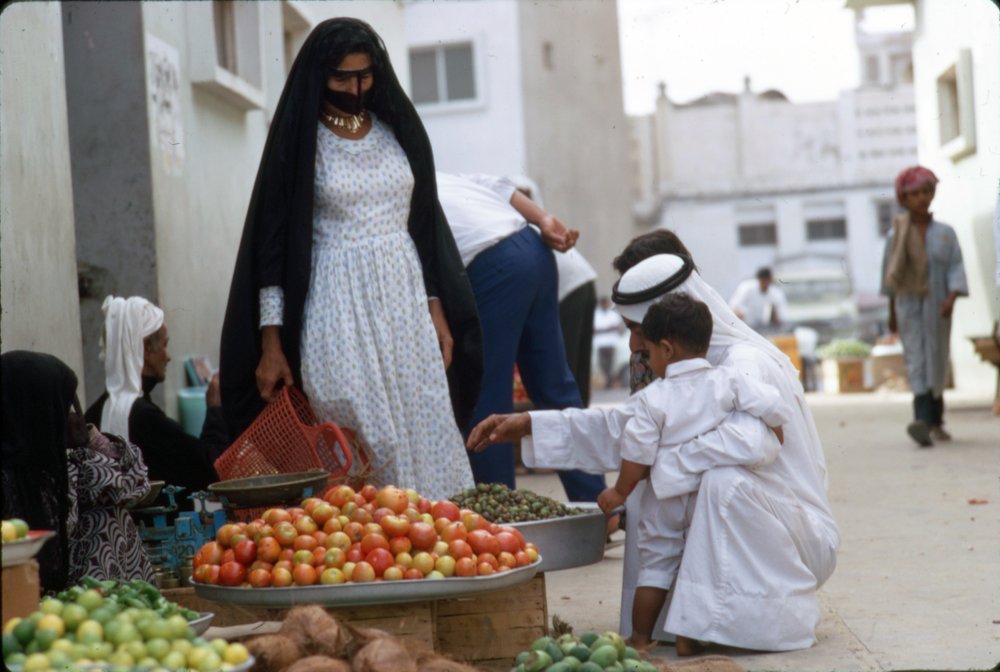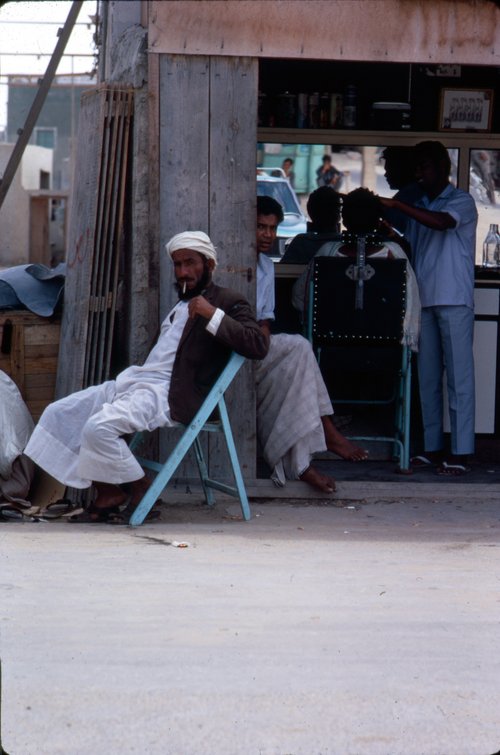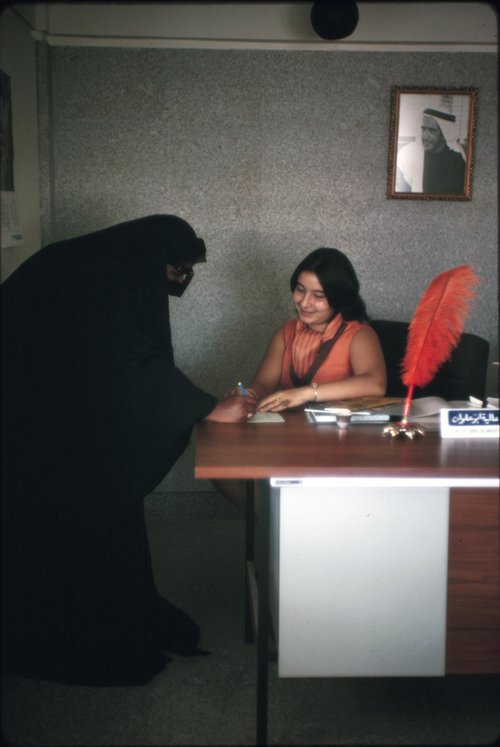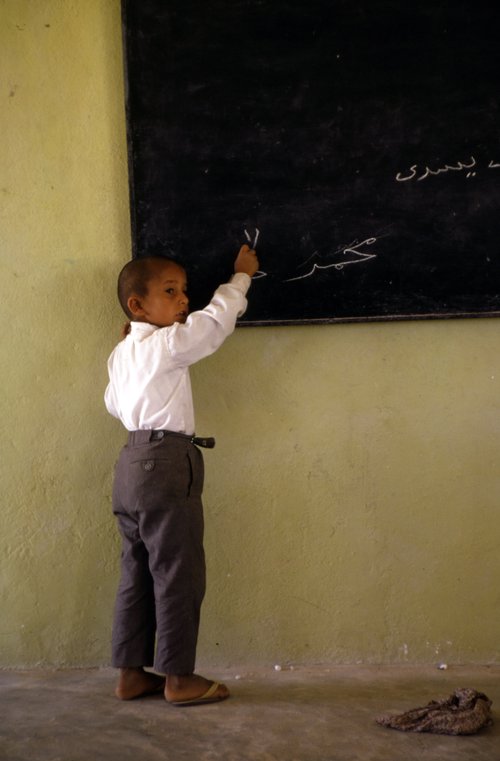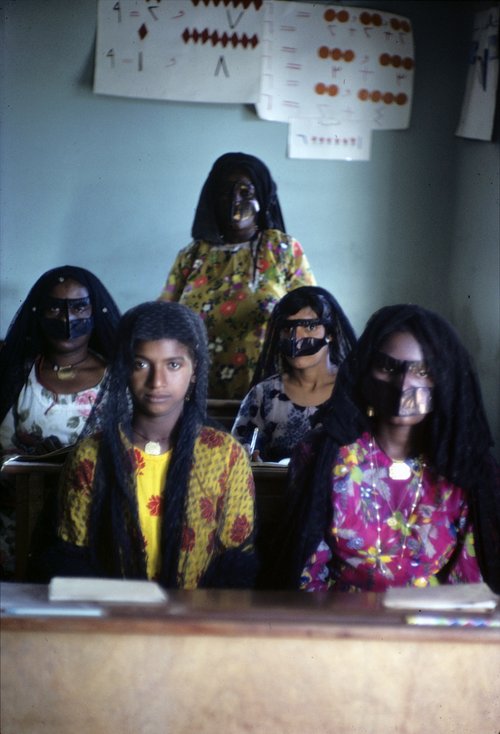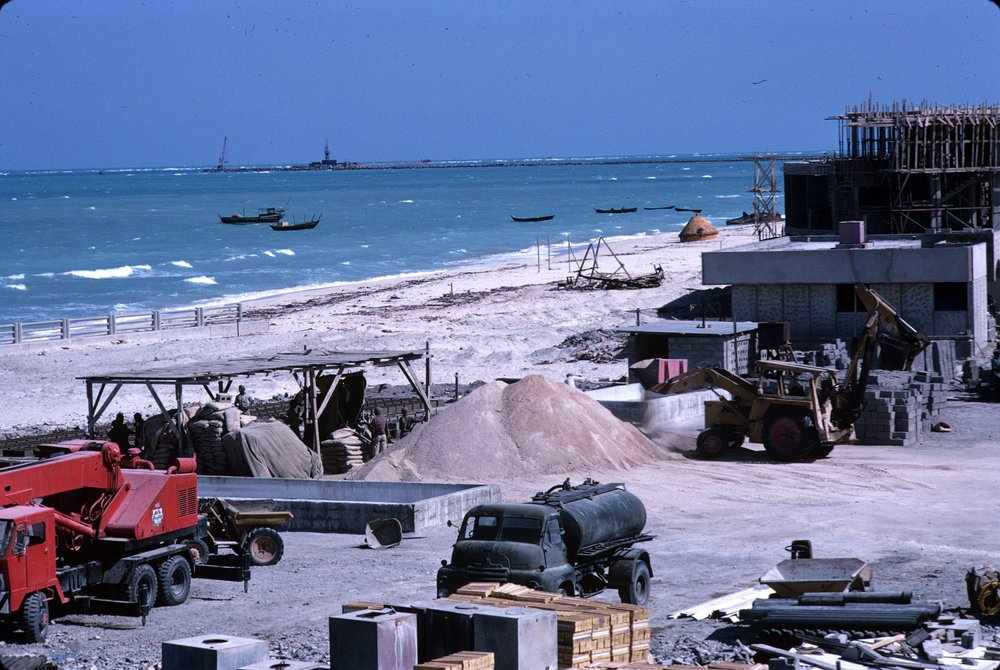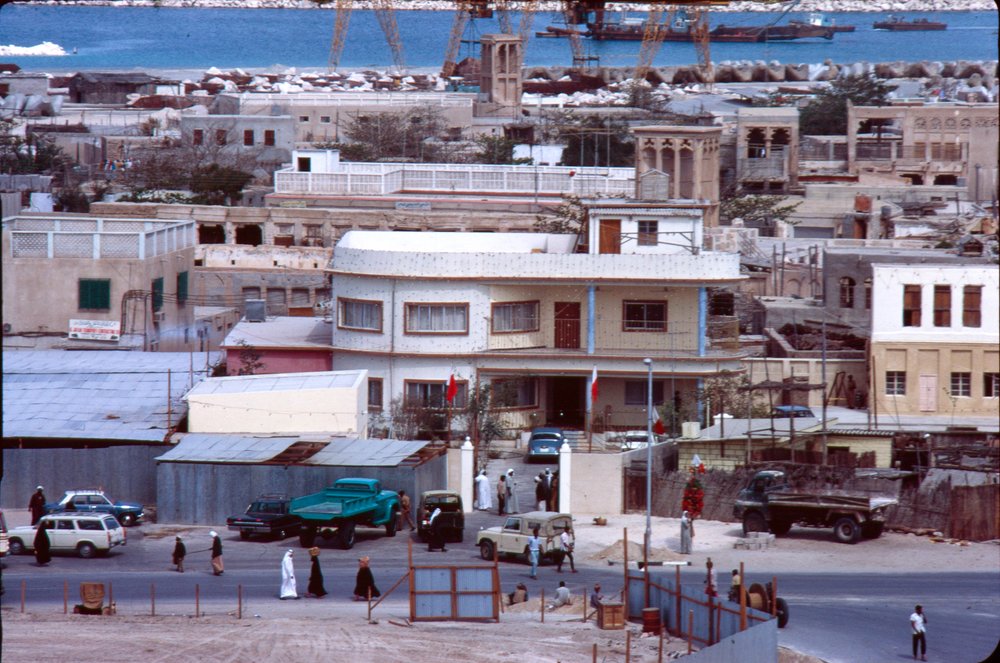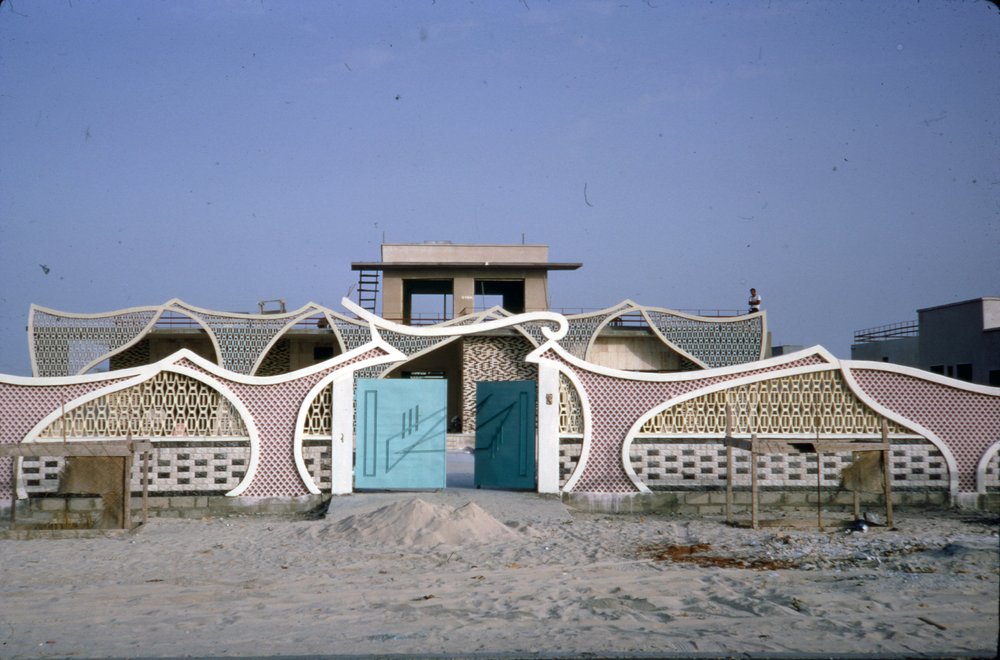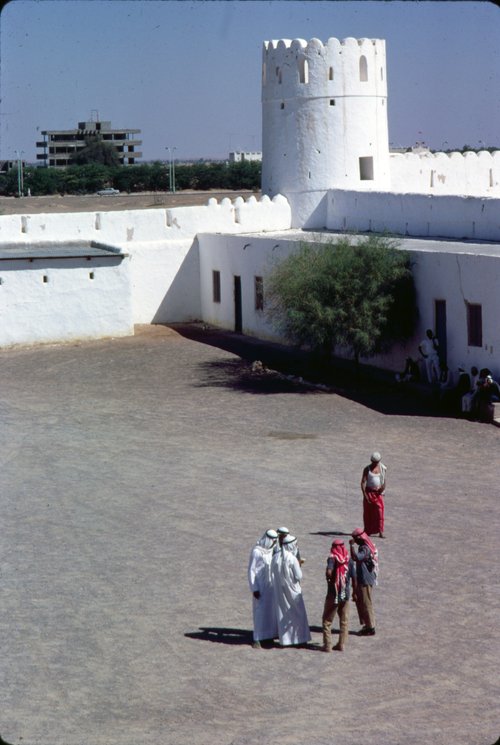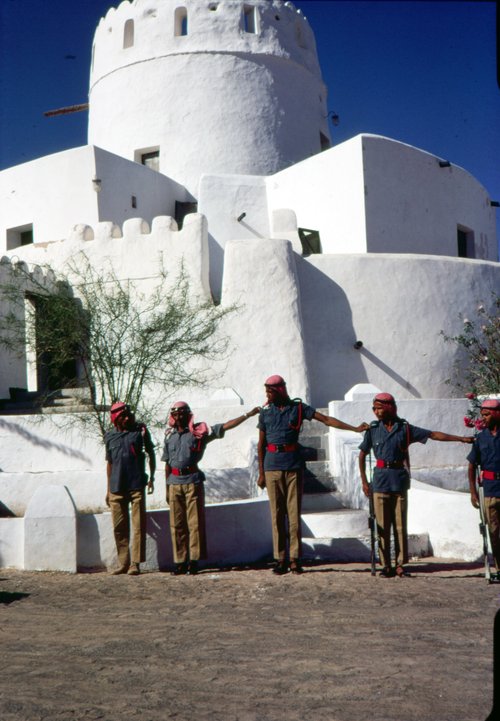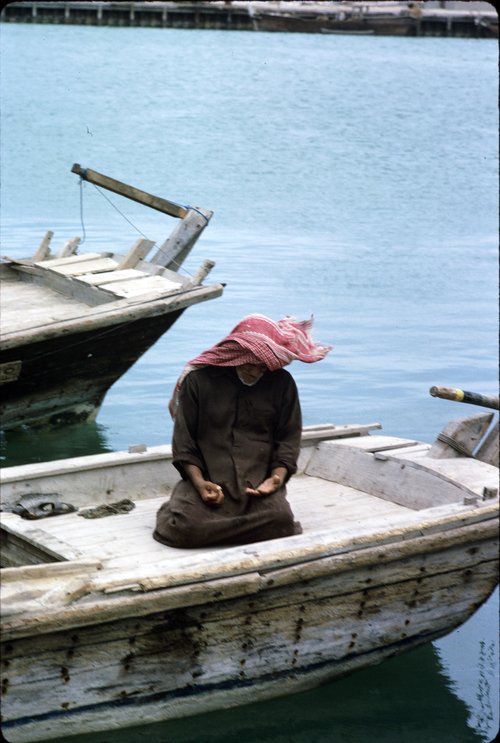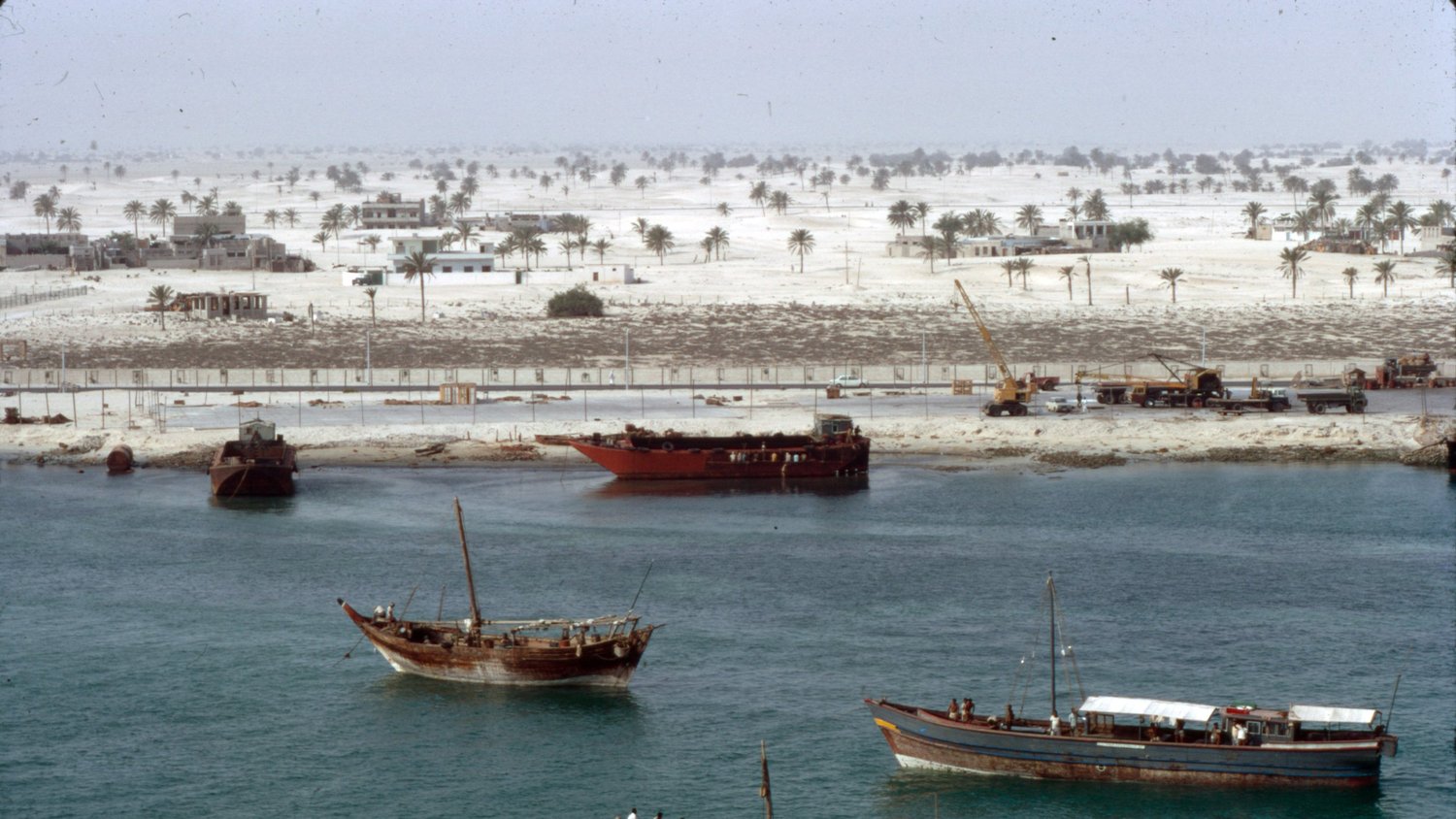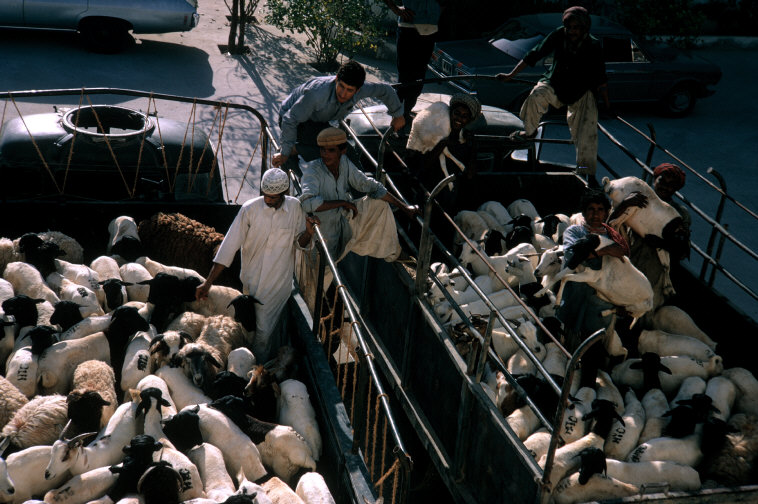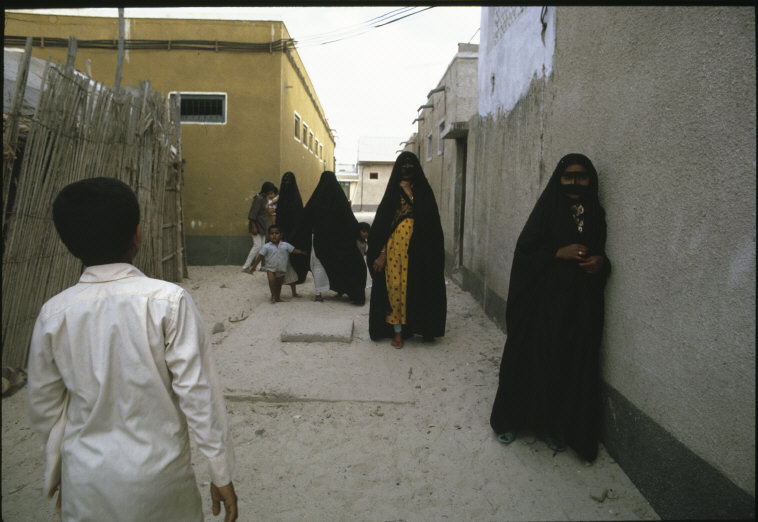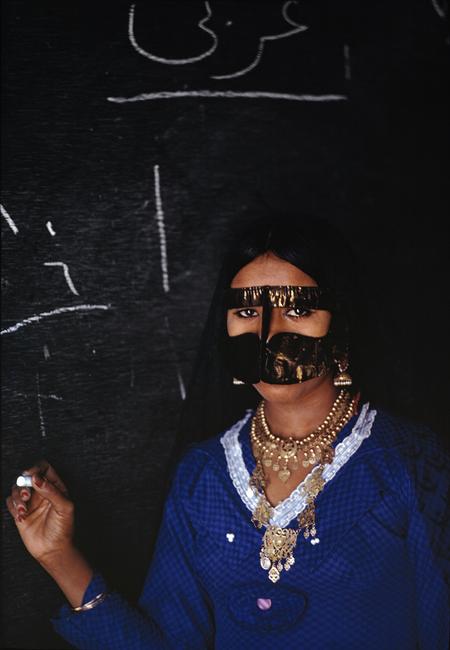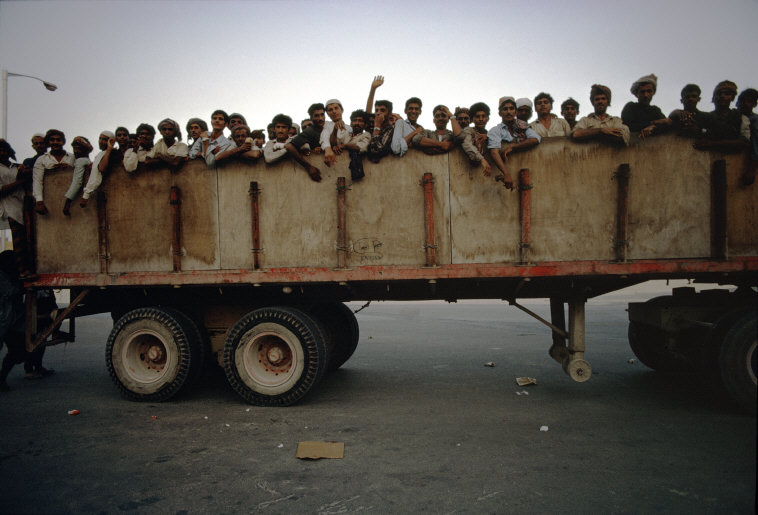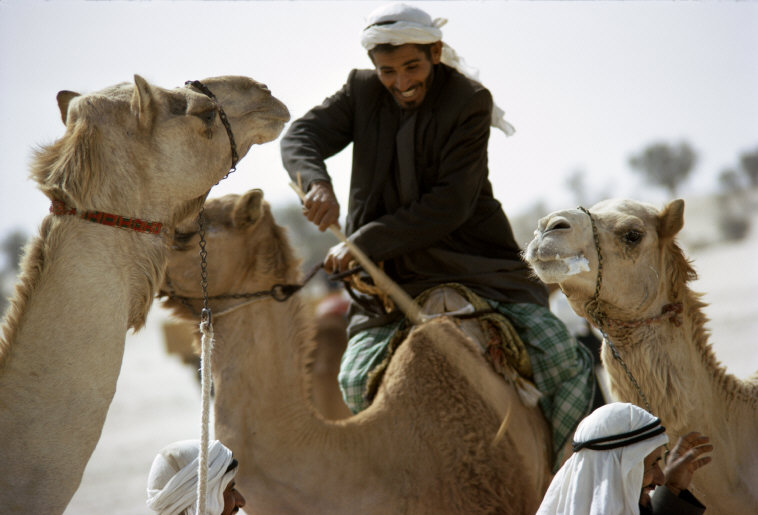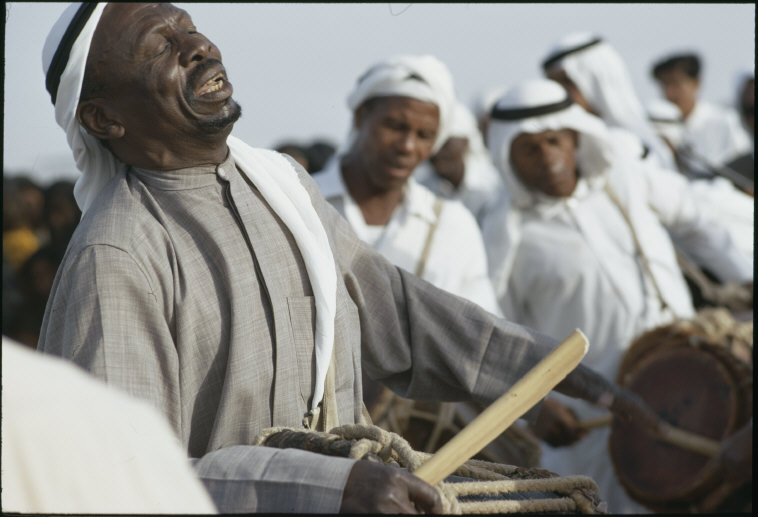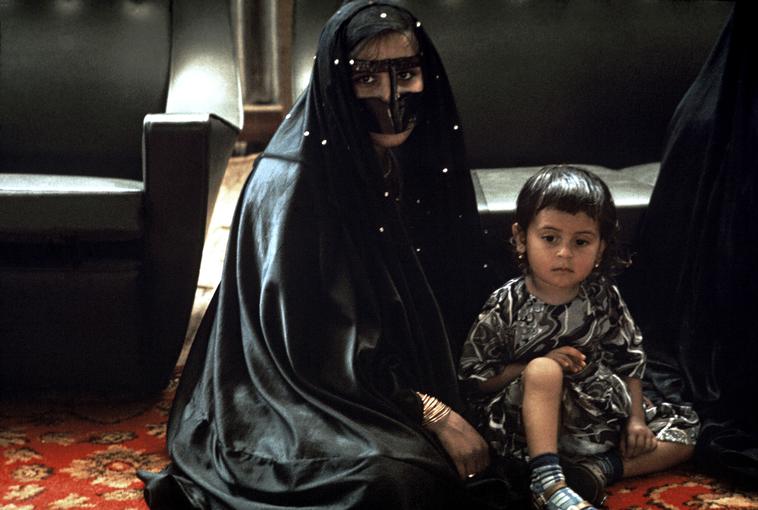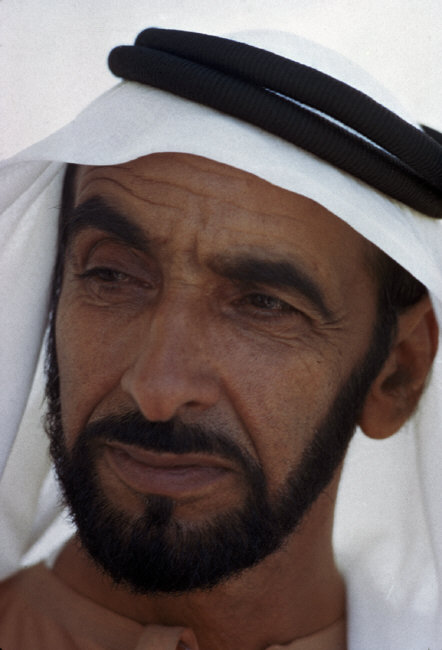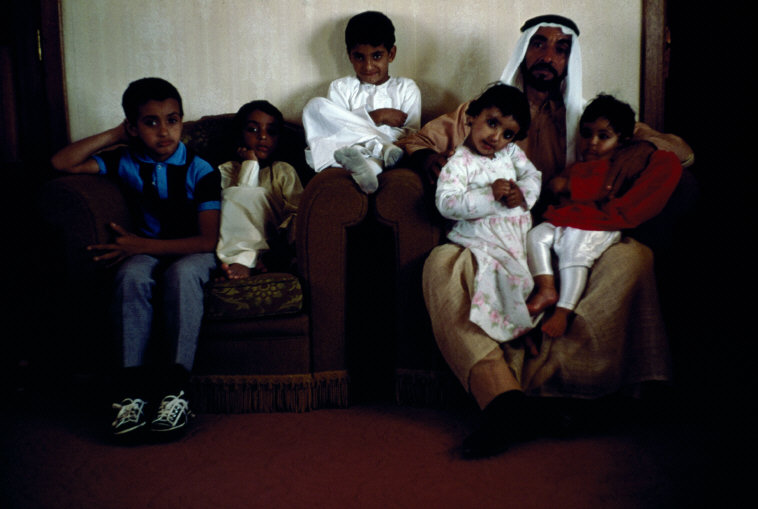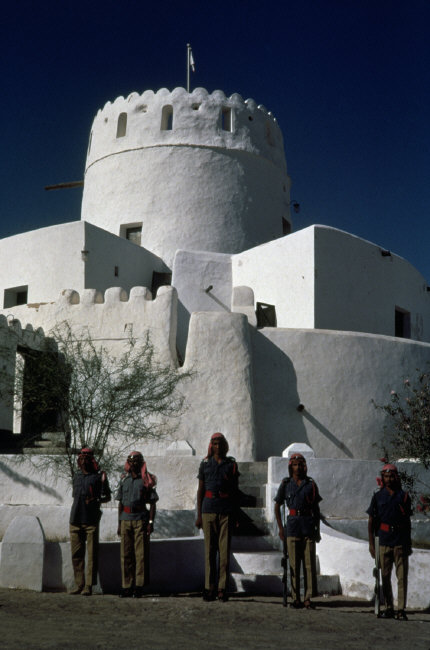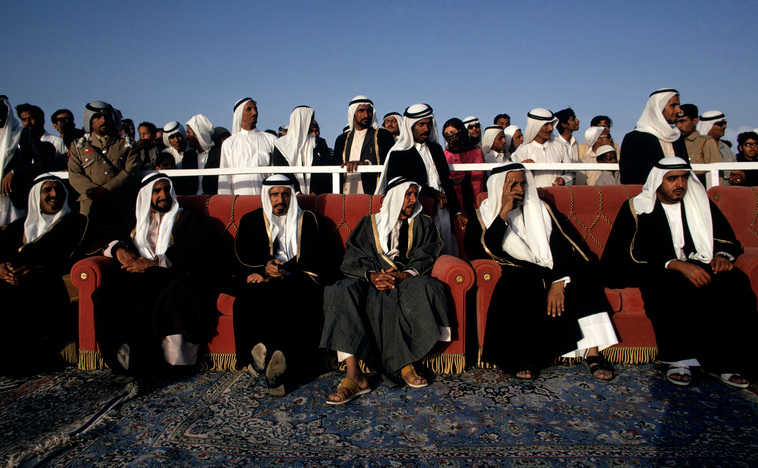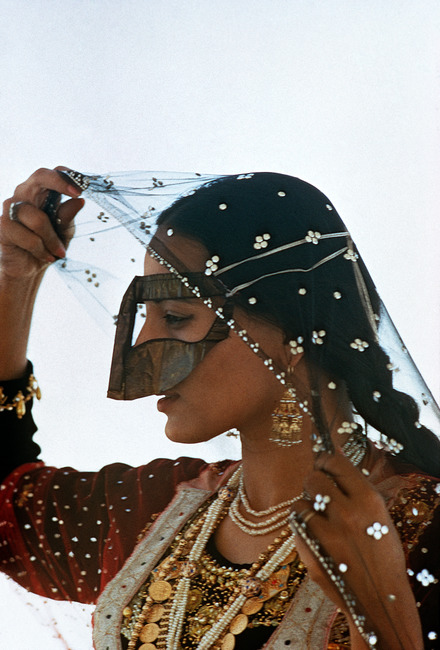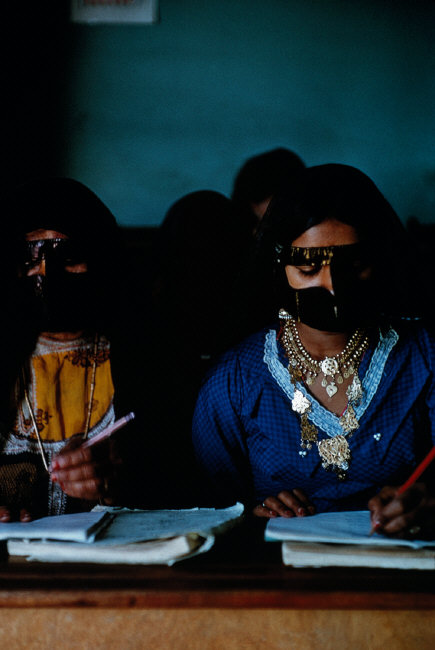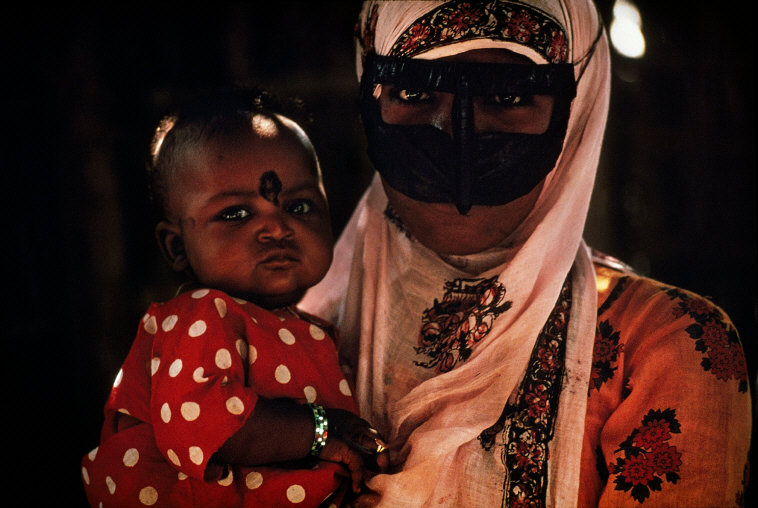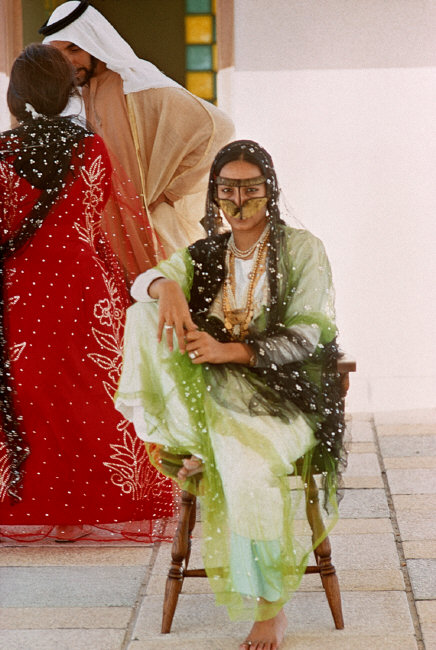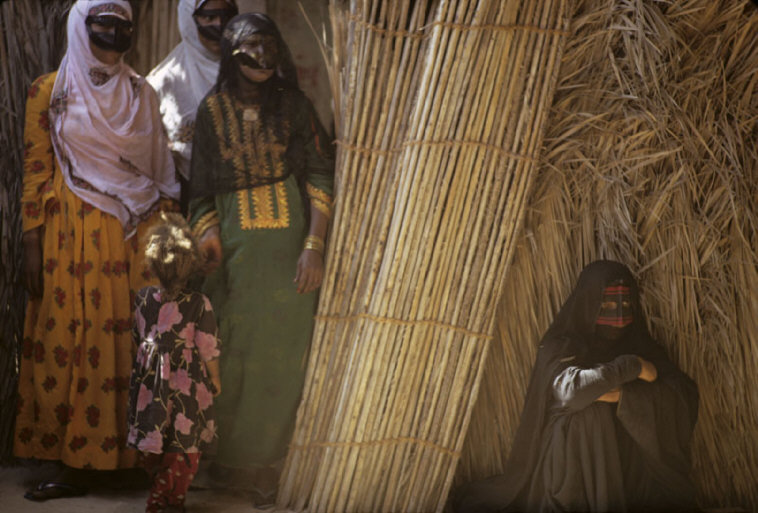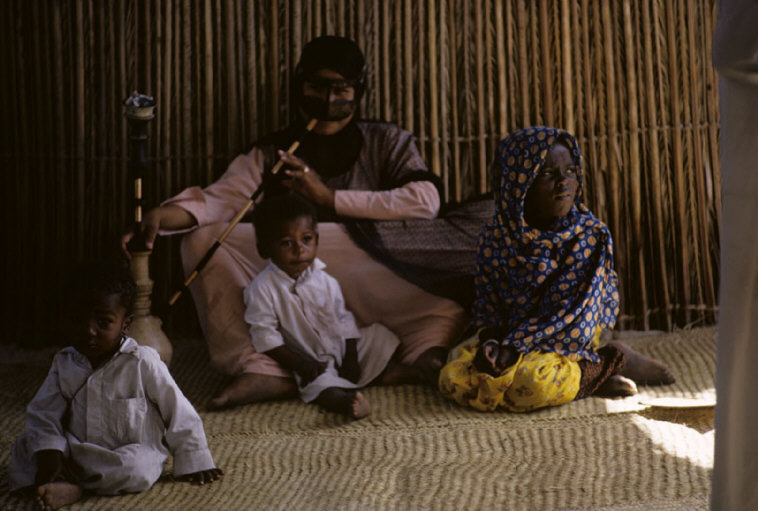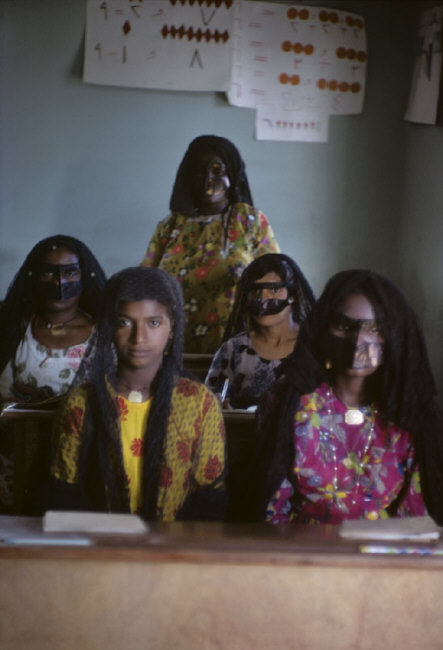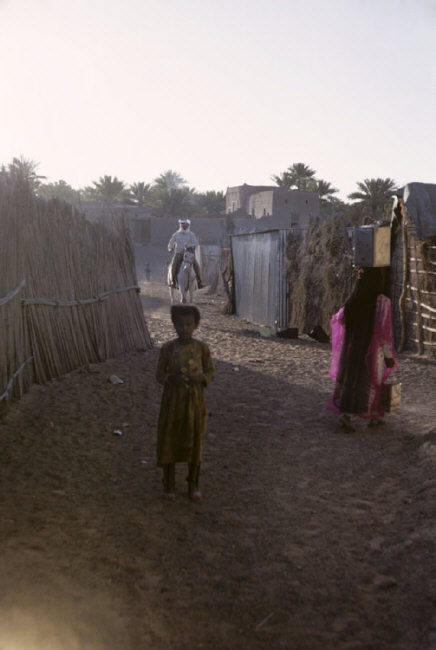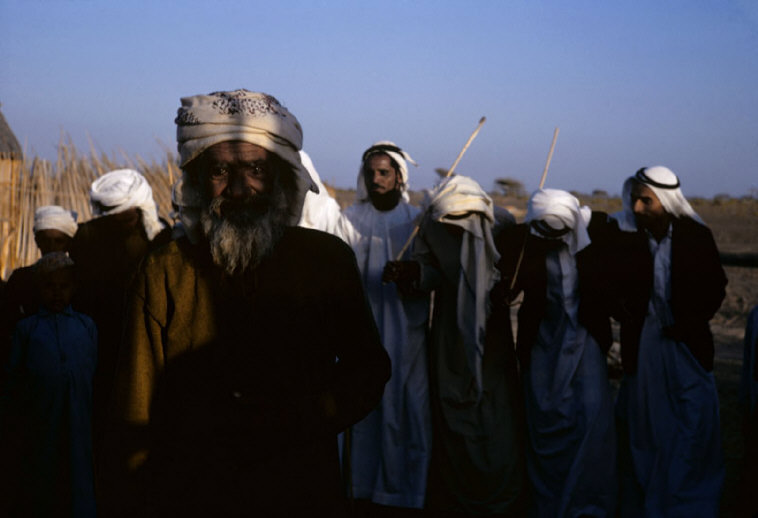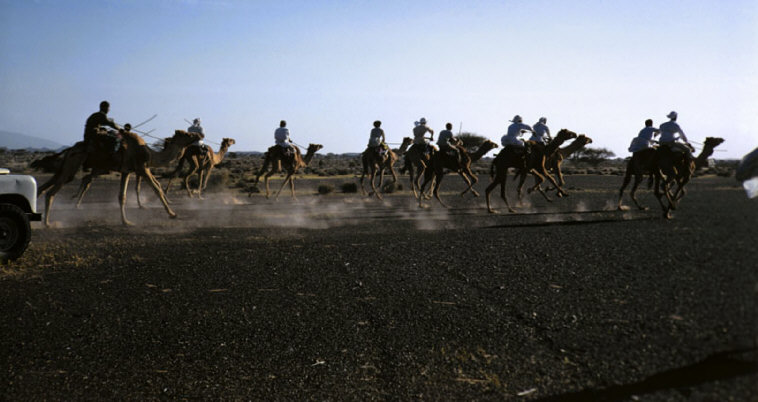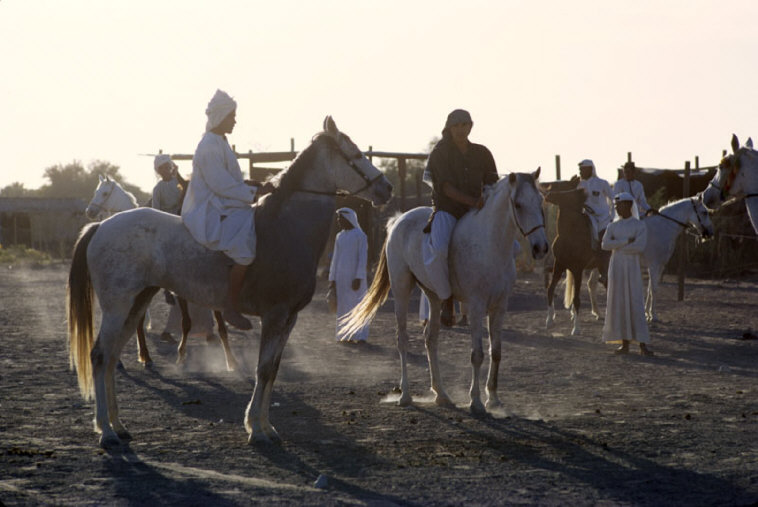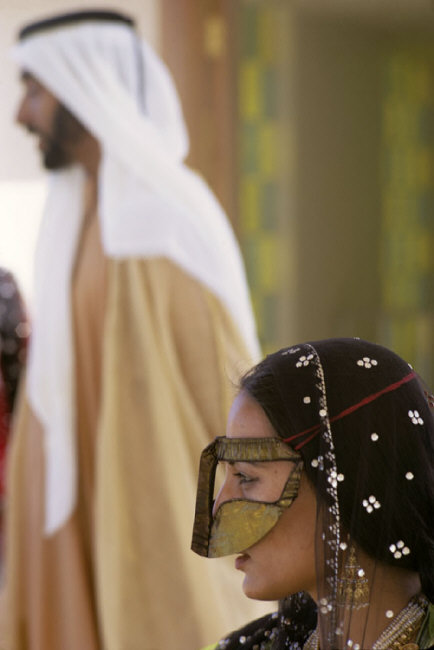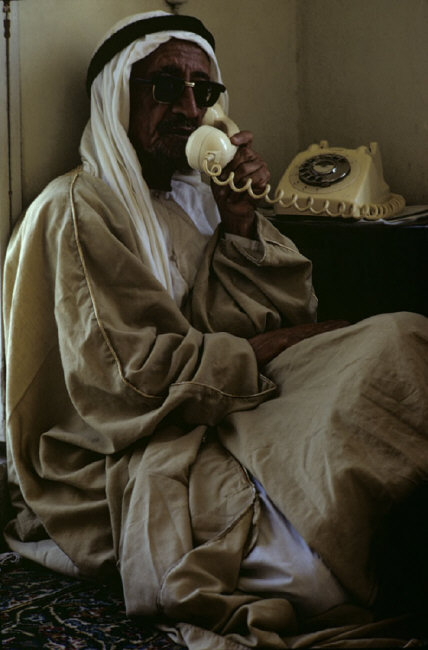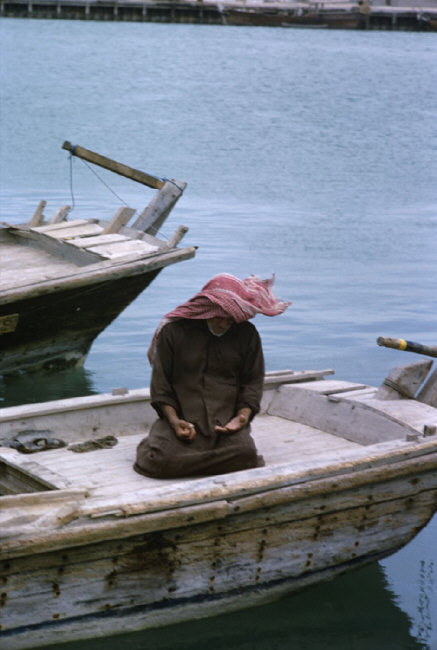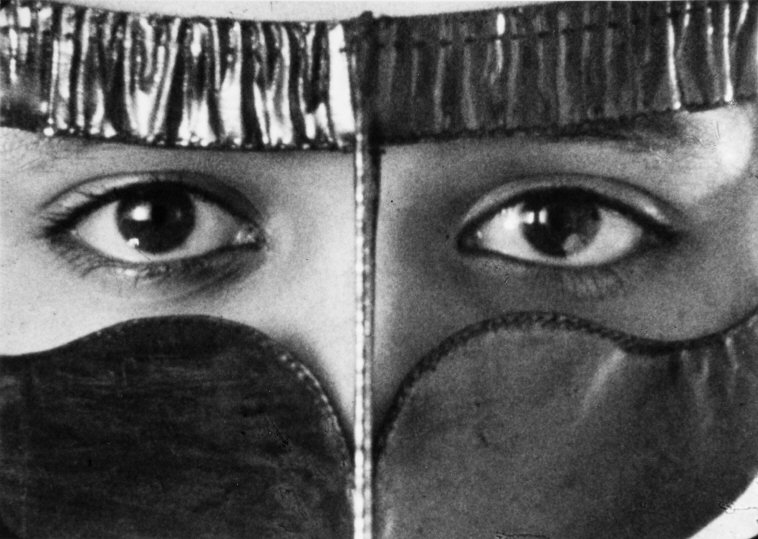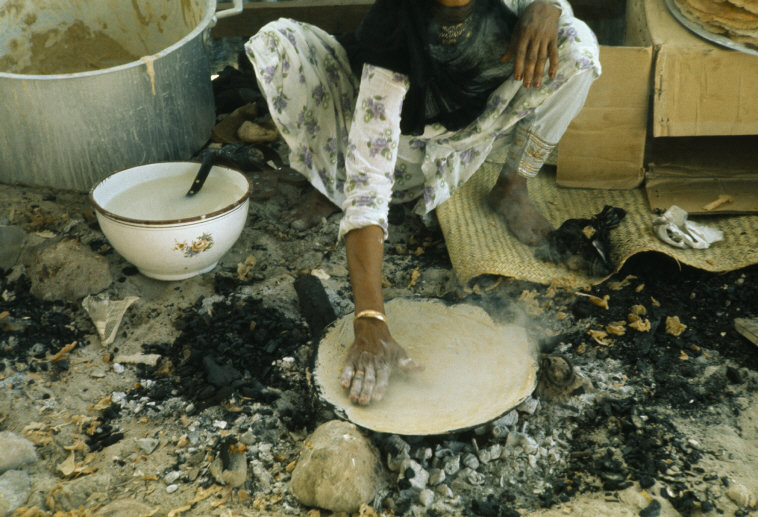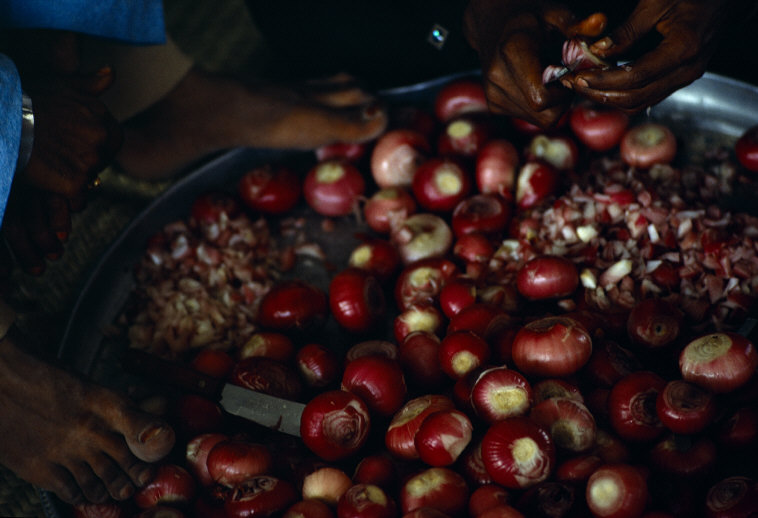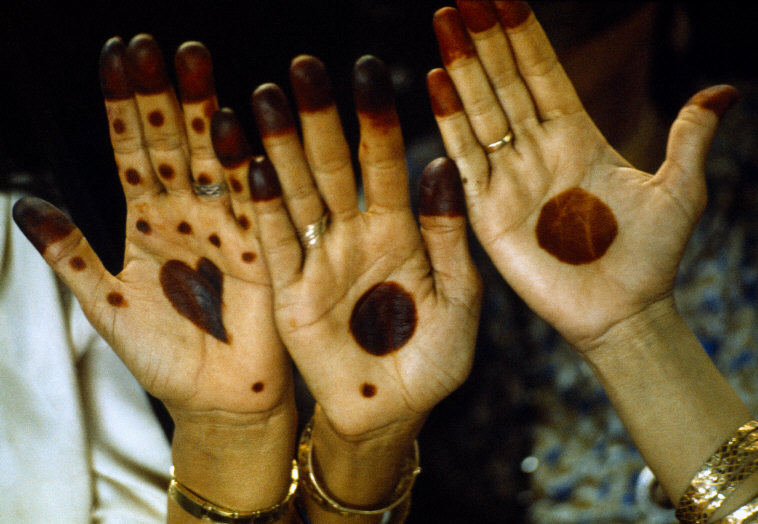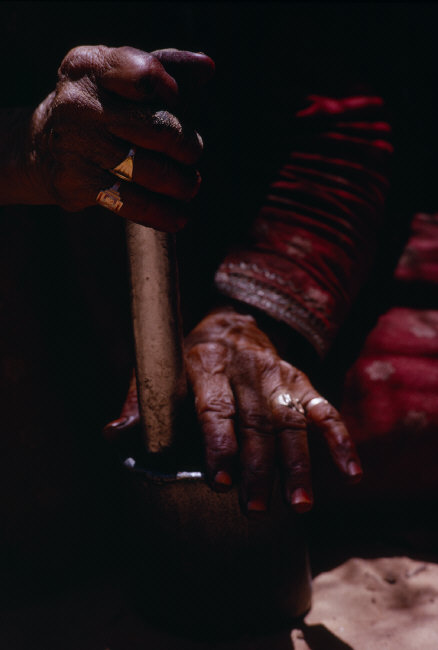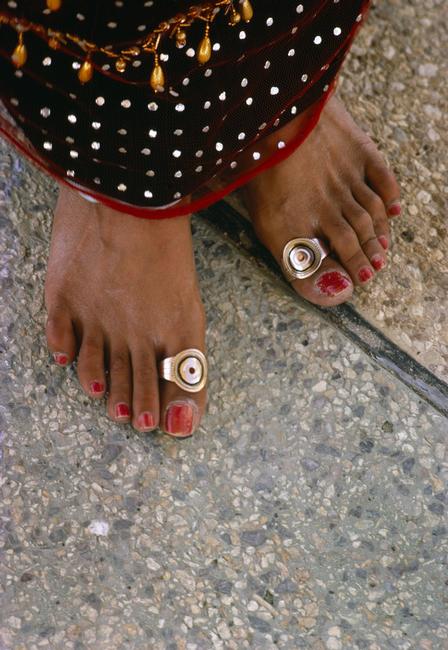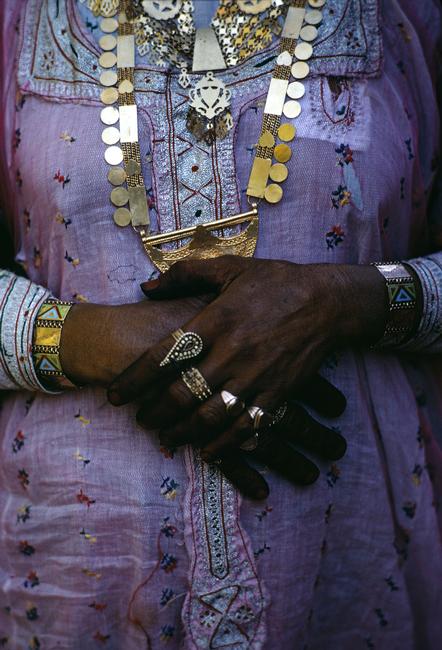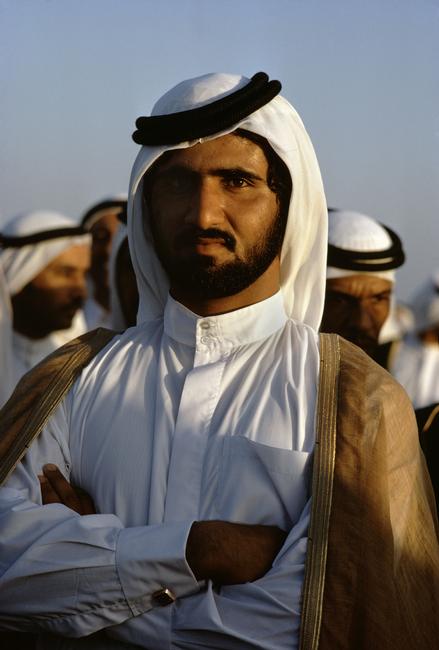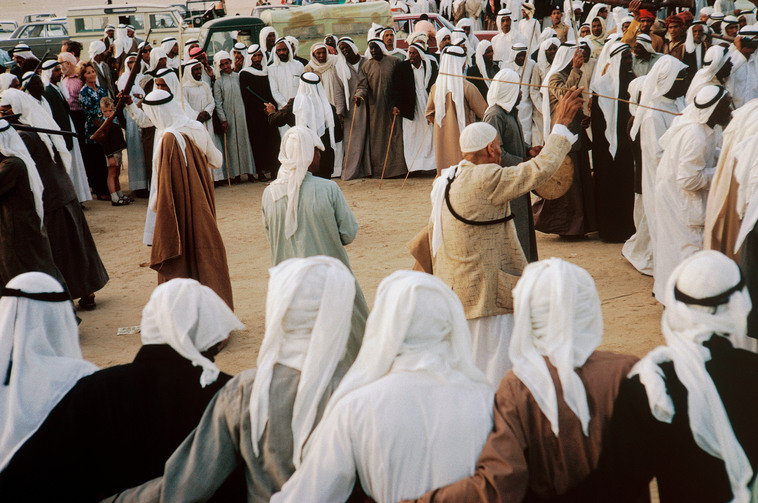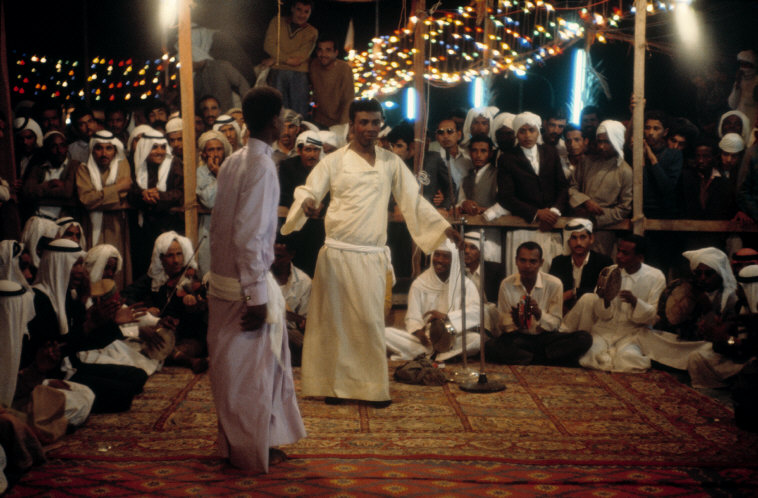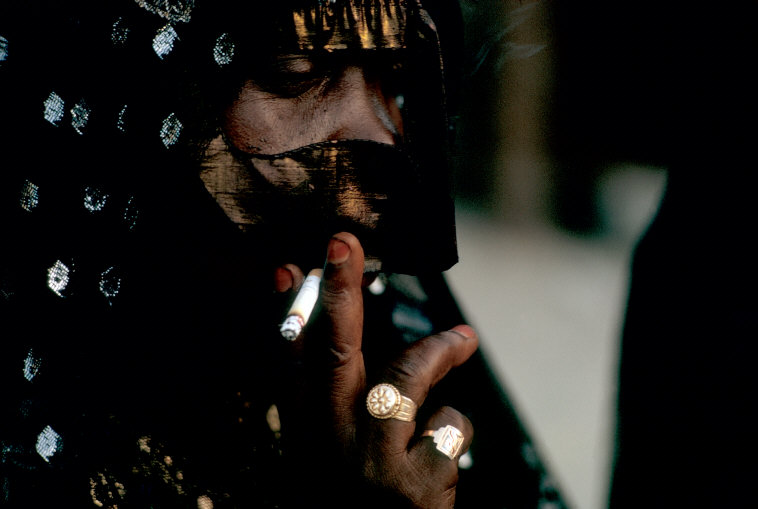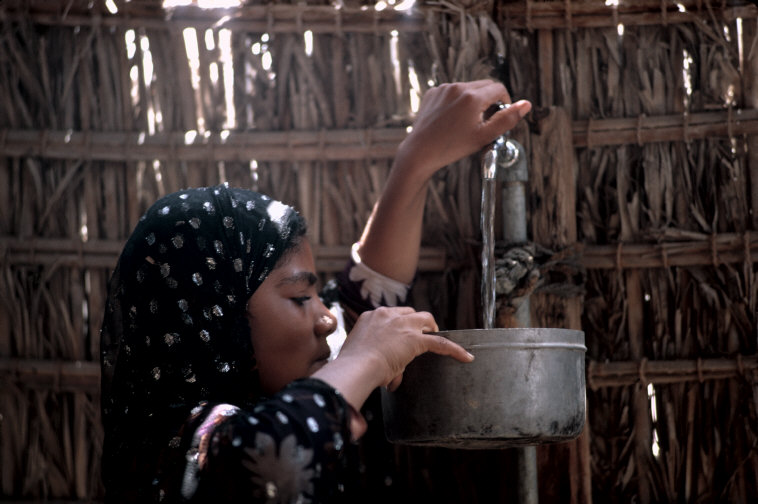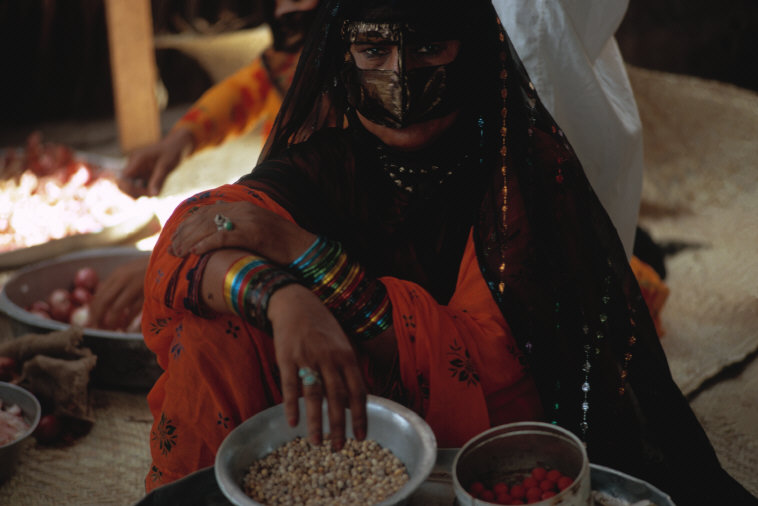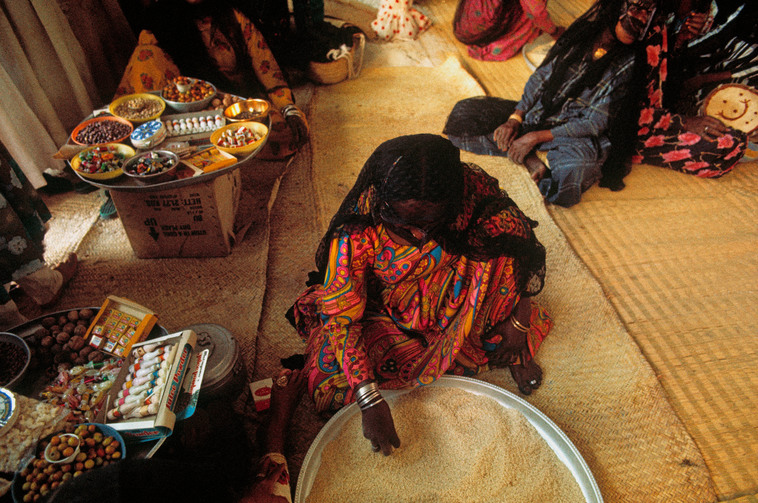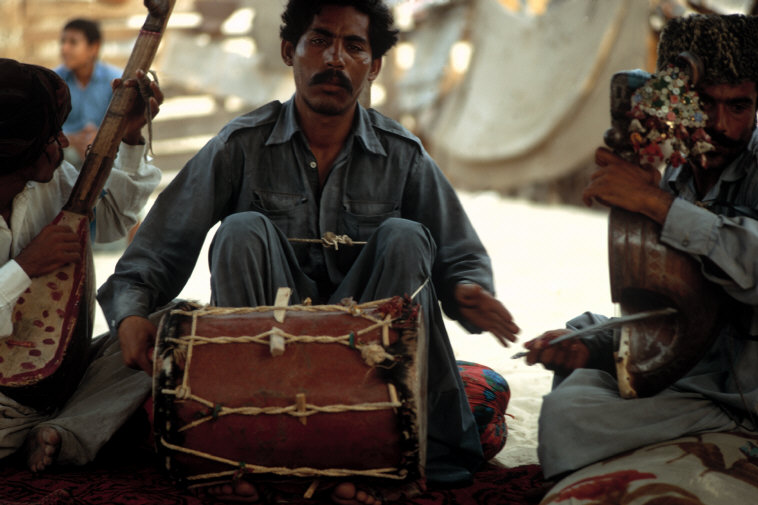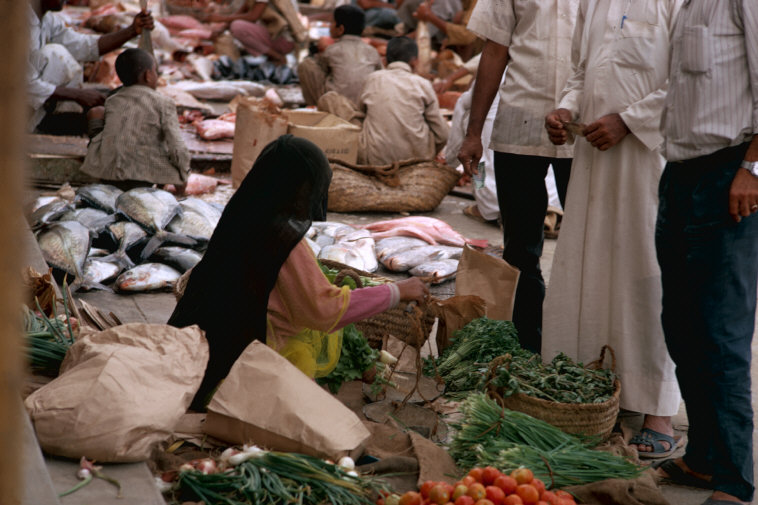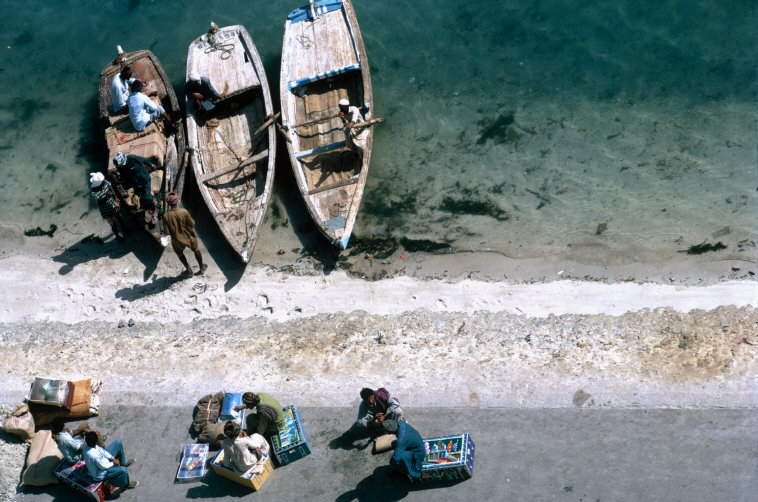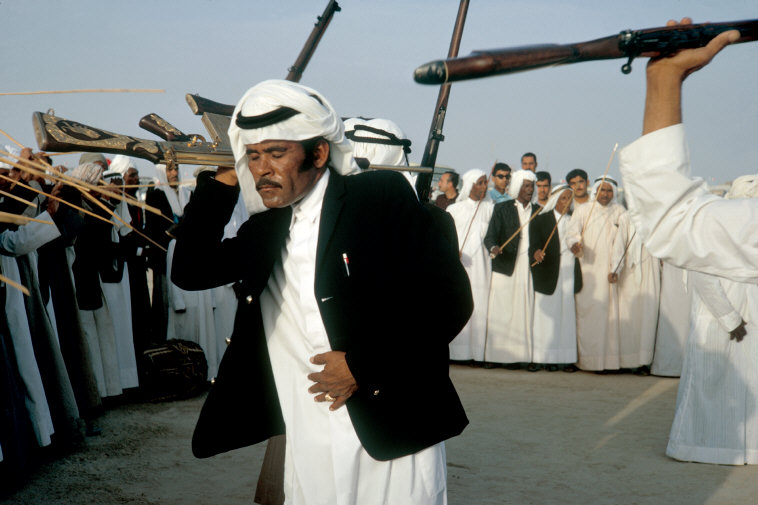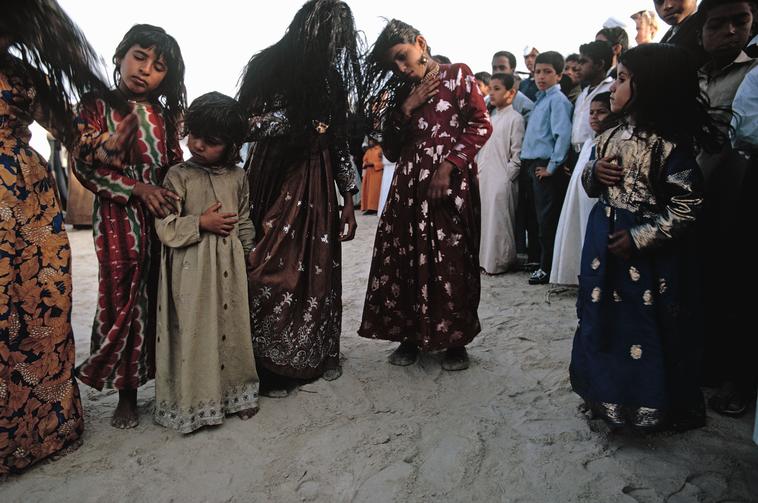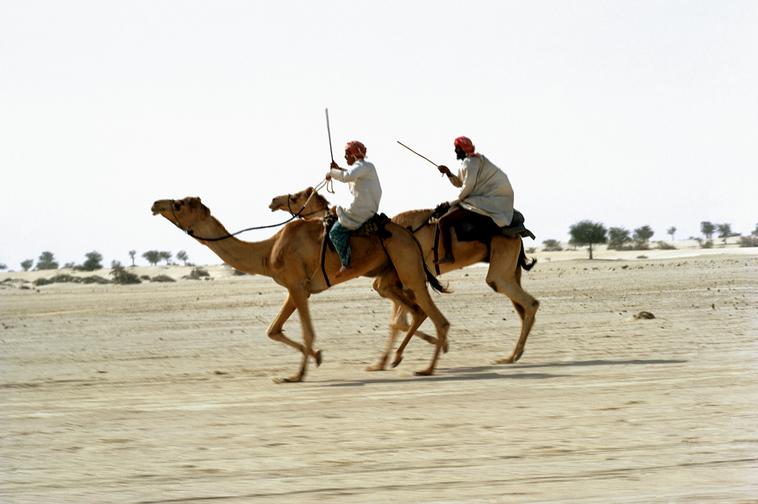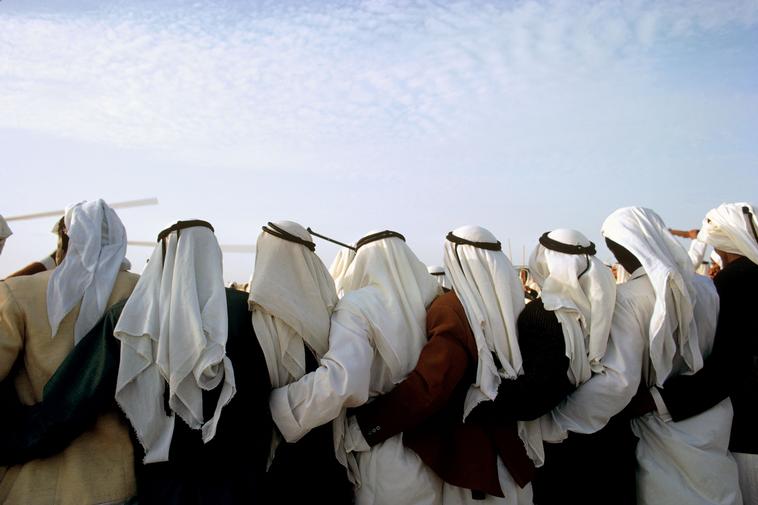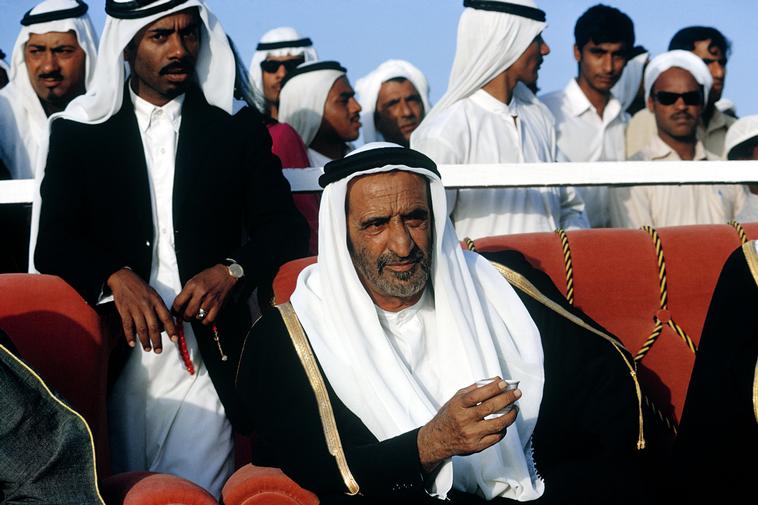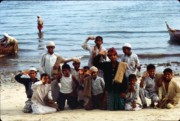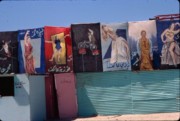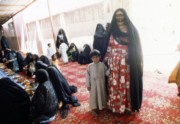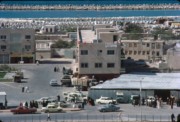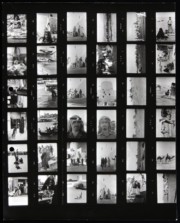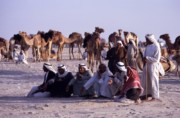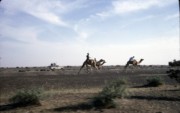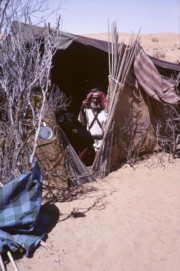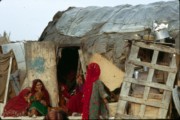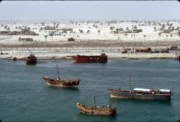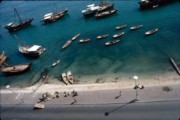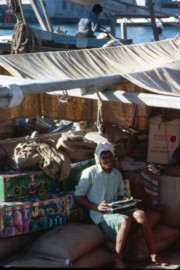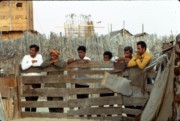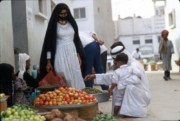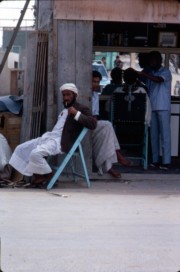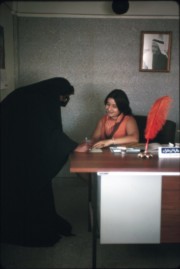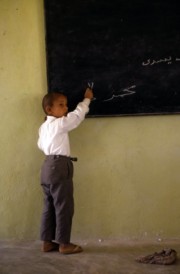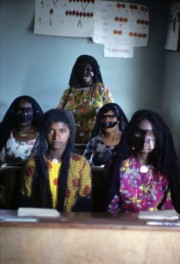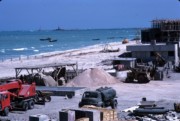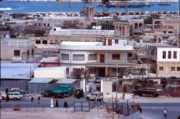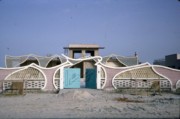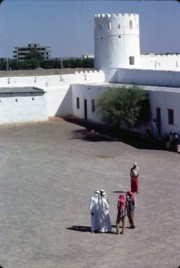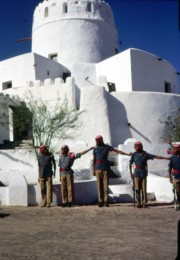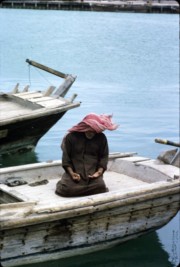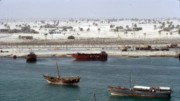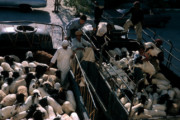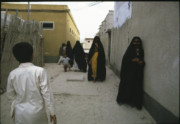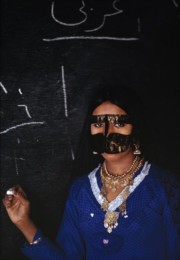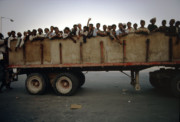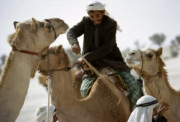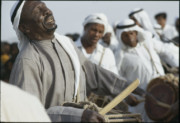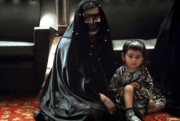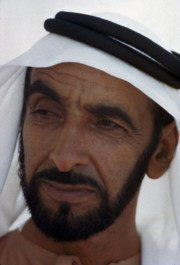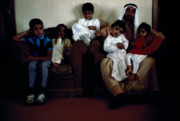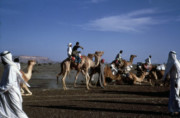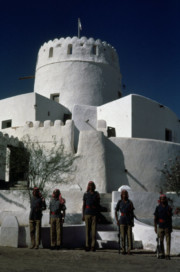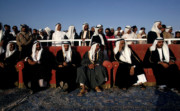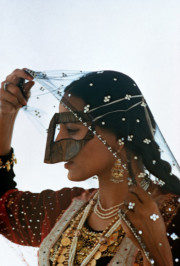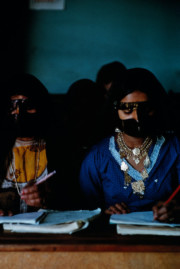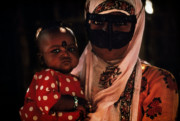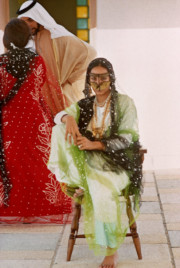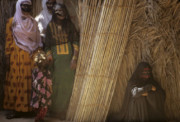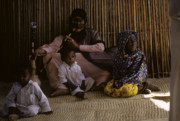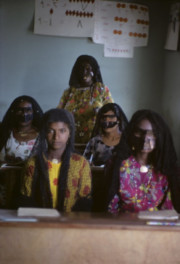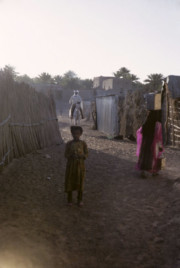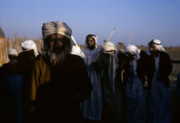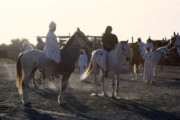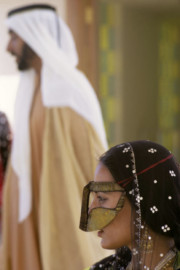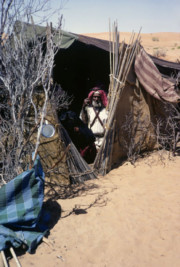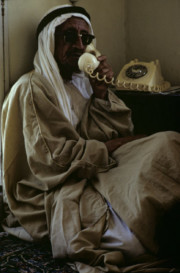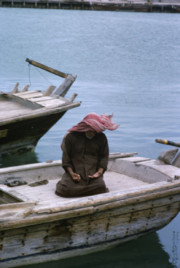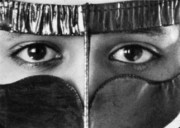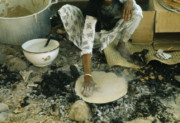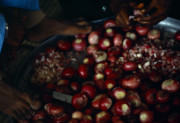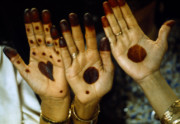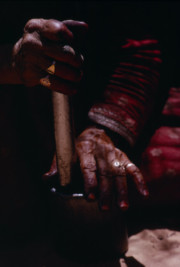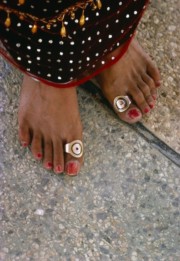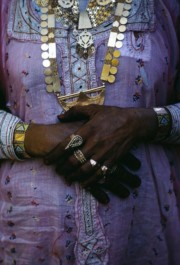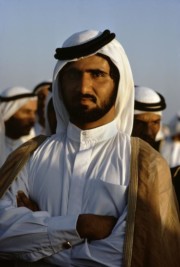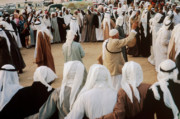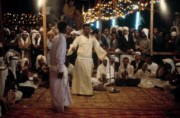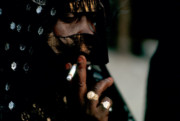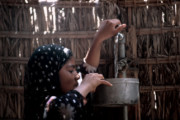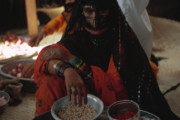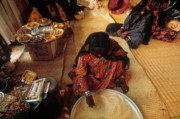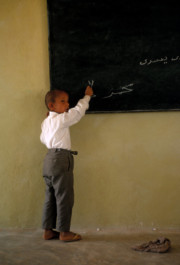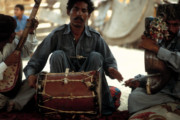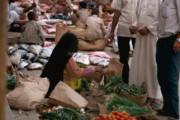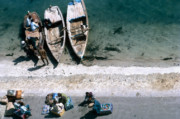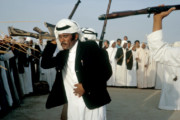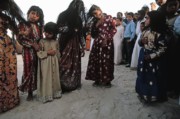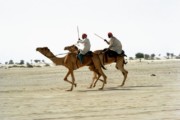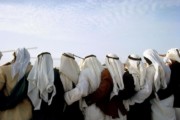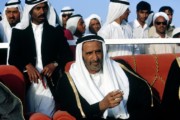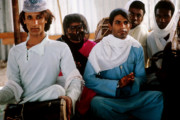Eve Arnold Contact sheet from the Eve Arnold Collection (YCAL MSS 611, Box 121) at the Beinecke Rare Book and Manuscript Library, Yale University. According to the library catalog, the Eve Arnold Papers conta (...)
in “her photographs, contact sheets, negatives, slides, transparencies, diaries, film production files, correspondence, writings by and about Arnold, printed materials, and ephemera that document her career as a member of the Magnum Photos cooperative. In addition, the collection contains audiovisual materials including motion picture film, videocassettes, sound recordings, and computer media.” Courtesy of Beinecke Rare Books and Manuscript Library, Yale University. © Eve Arnold | Magnum Photos
Eve Arnold “Grooms and camels await arrival of Sheikh Rashid, Ruler of Dubai, so race can begin, Dubai, 1971.” Eve Arnold attended the wedding celebrations as a guest of the Al Maktoum family and was granted (...)
unusual access to both male and female spaces at what would have been a highly segregated event. (Courtesy of Beinecke Rare Books and Manuscript Library, Yale University. © Eve Arnold | Magnum Photos
Eve Arnold “Camel and Jeep race,” c. 1971. Camel racing was a popular sport in the Trucial States, and continues even today in the UAE although much has changed in regard to safety and compliance. This photo (...)
graph shows enthusiasts driving along in a four wheel-drive vehicle, cheering the riders and camels. Courtesy of Beinecke Rare Books and Manuscript Library, Yale University. © Eve Arnold | Magnum Photos
Eve Arnold "Bedouin wife and husband in their tent, Abu Dhabi, 1970.” Tribal life in the Trucial States defined the culture of the fishing ports along the Persian Gulf as well as the migratory communities of (...)
the Arabian Peninsula. Courtesy of Beinecke Rare Books and Manuscript Library, Yale University. © Eve Arnold | Magnum Photos
Eve Arnold “Baluchistan family before their tent in Dubai, 1970.” The Baluch are historically a semi-nomadic ethnic group, whose traditional homelands lie in Southwestern Asia, in what is now Pakistan, Iran, (...)
and Afghanistan. At the time that Arnold visited they could also be found along the coastal areas of the Persian Gulf. Courtesy of Beinecke Rare Books and Manuscript Library, Yale University. © Eve Arnold | Magnum Photos
Eve Arnold View of the coastline along the Persian Gulf, c. 1970. It is unclear how Arnold took this set of photographs, which today could be attributed to drone photography. The elevated view shows tradition (...)
al dhows, the primary mode of transport along the Arabian Sea and the Persian Gulf. In the middle distance, cranes and trucks evince the building activity that was taking place at breakneck speed. Courtesy of Beinecke Rare Books and Manuscript Library, Yale University. © Eve Arnold | Magnum Photos
Eve Arnold Dhows and small boats at the port, c. 1970. Through much of the first half of the twentieth century, pearl diving and commercial fishing were the primary livelihoods of the coastal communities of t (...)
he Persian Gulf. These soon gave way to the transport of oil and trade cargo. Courtesy of Beinecke Rare Books and Manuscript Library, Yale University. © Eve Arnold | Magnum Photos
Eve Arnold “Sailor in Dhow, Dubai harbor, 1970.” The photograph shows a young man, beaming towards the camera as he holds a transistor radio in his hand. It is a poignant reminder that traditional livelihoods (...)
were not incompatible with modernization. The first radio station in the region was the British-operated, Arabic language “Voice of the Coast (Eda’hat sawet al-sahel),” broadcast in Sharjah in 1965. Courtesy of Beinecke Rare Books and Manuscript Library, Yale University. © Eve Arnold | Magnum Photos
Eve Arnold Workers, c. 1970. Much of the workforce employed in developing the Trucial States came from Pakistan, Egypt, and India. The photograph shows not only a mix of ethnicities, but of professions, from (...)
laborers to office workers. Courtesy of Beinecke Rare Books and Manuscript Library, Yale University. © Eve Arnold | Magnum Photos
Eve Arnold Grocery shopping in the bazaar, c. 1970. This scene of an Emirati family is powerful in capturing a moment that is now relegated to the past. Such a simple family outing, with women selling fresh v (...)
egetables on the street, would be difficult to find in the busy avenues and shopping plazas of the UAE today. Courtesy of Beinecke Rare Books and Manuscript Library, Yale University. © Eve Arnold | Magnum Photos
Eve Arnold Man outside a barbershop, c. 1970. Another scene of quotidian life in the Trucial States before urban development would transform the neighborhoods of Dubai, Sharjah and Abu Dhabi. Arnold was an em (...)
pathetic and observant documentary photographer, with a keen visual sensibility. Courtesy of Beinecke Rare Books and Manuscript Library, Yale University. © Eve Arnold | Magnum Photos
Eve Arnold “Bank teller in the purdah (women’s) section, Dubai, 1970.” Public institutions such as banks and schools were the backbones of development efforts undertaken in the Trucial States. The Imperial Ba (...)
nk was the first bank that opened in Dubai in 1946, with branches across the Persian Gulf. The National Bank of Dubai (now Emirates NBD) was established in 1963, a harbinger of Dubai’s ambitions as a financial power in the region. Courtesy of Beinecke Rare Books and Manuscript Library, Yale University. © Eve Arnold | Magnum Photos
Eve Arnold “Children of nomadic tribesman in school, Abu Dhabi, 1970.” The first school with a comprehensive and modern curriculum was established in Sharjah in 1953, first for boys and then for girls. Educat (...)
ion continues to be a priority in the UAE, with technical colleges, public and private universities. Courtesy of Beinecke Rare Books and Manuscript Library, Yale University. © Eve Arnold | Magnum Photos
Eve Arnold “Women in adult literacy evening classes, Abu Dhabi, 1970.” Public education was well-established by the time that Arnold took this striking image of young women in Abu Dhabi. In Dubai, Ras Al Khai (...)
mah and Sharjah girls’ schools were already there in the 1950s and in Umm Al Quwain, Ajman and Fujairah by the mid-1960s. Courtesy of Beinecke Rare Books and Manuscript Library, Yale University. © Eve Arnold | Magnum Photos
Eve Arnold “Hotel construction on shores of Persian Gulf, April 1970.” Arnold was witness to the massive development projects that would entirely transform the Trucial States. The master plans for Dubai and A (...)
bu Dhabi had already broken ground some years before her arrival, and the scale of building activity was remarkable. Courtesy of Beinecke Rare Books and Manuscript Library, Yale University. © Eve Arnold | Magnum Photos
Eve Arnold Dubai under construction, c. 1970. The photograph shows new construction interspersed between older structures, such as the wind towers (barjīl or bādgīr) that were an integral part of residential (...)
architecture of the Persian Gulf and the Arabian Sea Coast. Courtesy of Beinecke Rare Books and Manuscript Library, Yale University. © Eve Arnold | Magnum Photos
Eve Arnold “Dubai Villa, 1970.” At once kitschy and flamboyant, the exuberant façade of this “villa” –as an upper middle class, free-standing house was called – exemplifies the changing demographics of Dubai. (...)
With expatriates flocking to the city to help run hospitals, factories, schools, and hotels, among many other institutions, housing was an urgent need. Courtesy of Beinecke Rare Books and Manuscript Library, Yale University. © Eve Arnold | Magnum Photos
Eve Arnold Al-Jahili Fort, Al Ain, Abu Dhabi, 1970. The desert oasis of Al-Ain is a historical city on the eastern edge of Abu Dhabi, and home to the Al Jahili Fort. Built in 1891, the fort would retain signi (...)
ficance as a functional military base through the early years of the UAE. Courtesy of Beinecke Rare Books and Manuscript Library, Yale University. © Eve Arnold | Magnum Photos
Eve Arnold “Soldiers drilling outside al-Ain Fort, Abu Dhabi,” 1970. Each emirate had its own “ruler-controlled” military until the armed forced were unified in 1971, the same time as the official foundation (...)
of the UAE. Courtesy of Beinecke Rare Books and Manuscript Library, Yale University. © Eve Arnold | Magnum Photos
Eve Arnold “Man at Prayer at harbor, Ras al Khaimah, April 1970.” Eve Arnold captures this quiet moment of prayer, cropping out the bustling activity taking place around the man. The wind gently lifts the fab (...)
ric draped around his head and his slippers lay scattered behind him. His open palm and downcast eyes focus the attention of the viewer, an image of private devotion in a rapidly changing world. Courtesy of Beinecke Rare Books and Manuscript Library, Yale University. © Eve Arnold | Magnum Photos
Eve Arnold View of the coastline along the Persian Gulf, c. 1970. It is unclear how Arnold took this set of photographs, which today could be attributed to drone photography. The elevated view shows tradition (...)
al dhows, the primary mode of transport along the Arabian Sea and the Persian Gulf. In the middle distance, cranes and trucks evince the building activity that was taking place at breakneck speed. Courtesy of Beinecke Rare Books and Manuscript Library, Yale University. © Eve Arnold | Magnum Photos
